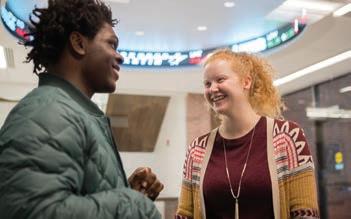






A New Agenda for Education and the Community

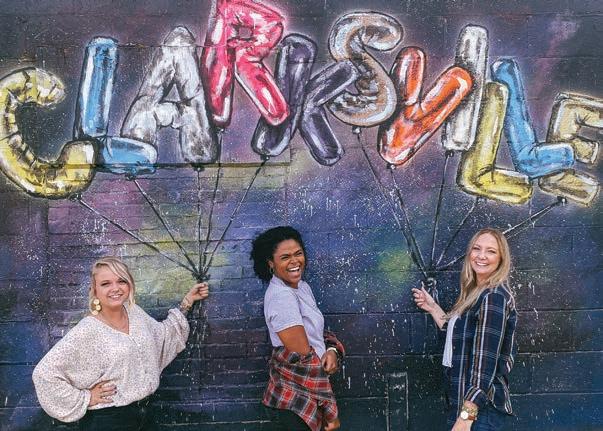
PREPARED BY THE HARWOOD INSTITUTE FOR PUBLIC INNOVATION IN PARTNERSHIP WITH WOMEN VETERANS OF AMERICA, LEADERSHIP CLARKSVILLE, AND BIG BROTHERS BIG SISTERS OF CLARKSVILE
BY RICHARD C. HARWOOD AND JOHN P. CONROY

The Harwood Institute for Public Innovation 4915 St. Elmo Avenue, Suite 402
Bethesda, MD 20814
phone 301-656-3669
fax 301-656-0533
email info@theharwoodinstitute.org web theharwoodinstitute.org
The Harwood Institute for Public Innovation is a non-profit, nonpartisan organization that equips people, organizations, communities, and networks with the tools to bridge divides, build capacity, and tackle shared challenges. The Harwood Institute’s work is rooted in a philosophy of Civic Faith and the practice of Turning Outward. Founded in 1988, the Institute’s approach has spread to all 50 states across the U.S. and 40 countries around the world.
Leadership Clarksville P.O. Box 883 25 Jefferson St. Clarksville, TN 37043
phone 931-645-3322
email info@leadershipclarksville.com web leadershipclarksville.com
Leadership Clarksville in Tennessee was founded in 1987 as an independent, executive leadership program to give community leaders a three-dimensional view of the Clarksville/Montgomery County, Tennessee, community. The program is designed to identify and introduce to each other the recognized and future leaders of the area and to give them an intense look at the community, its strengths and weaknesses.

Big Brothers Big Sisters of Clarksville 420 Madison St, Ste. B-4 Clarksville, TN 37040
phone 931-647-1418
email info@bbbsclarksville.org web bbbsclarksville.org

Women Veterans of America P.O. Box 30561 Clarksville, TN 37040
email nationalwva@gmail.com web w vanational.com
Big Brothers Big Sisters of Clarksville creates and supports one-to-one mentoring relationships that ignite the power and promise of youth. We are a nonpartisan 501c3 that has been serving the Montgomery County community since 1975. Big Brothers Big Sisters operates under the belief that inherent in every child is incredible potential, and we are called to ignite that potential. As the community’s oldest donor- and volunteer-supported mentoring network, Big Brothers Big Sisters makes meaningful, monitored matches between adult volunteers (“Bigs”) and children (“Littles”) in ClarksvilleMontgomery County.
The Women Veterans of America is a nationwide nonprofit, nonpartisan 501c19 organization. We operate as the Voice for Women who have served or are currently serving in the United States Armed Forces, along with their families. We are committed to inspiring excellence of the next generation by deploying volunteers to bridge the gaps where needs exist. Together, in line with efforts across the nation, we support and educate communities of service by working on unique programs that share our core values.
Clarksville-MoCo Stepping Into the Future: A New Agenda for Education and the Community was prepared by The Harwood Institute for Public Innovation in partnership with Women Veterans of America, Leadership Clarksville, and Big Brothers Big Sisters of Clarksville.
We are grateful for the financial support from the Walton Family Foundation that made this report possible.
Written by Richard C. Harwood and John P. Conroy
Edited by Jed Miller
Research by Laine Bourassa, John Conroy, Maritza Coscarelli, Marla Crockett, Geoffrey Fenelus, Patrick Jones, Nakeyshia Kendall Williams, Joe Krushinsky, Monique Mosley, and Andrew Taylor
Assisted by Clarksville Alumnae Chapter of Delta Sigma Theta Sorority, Inc., “I am Invisible Bullying and Suicide,” Juanita Charles, Jen Dalton, Rosie Terry, and Sharon Edwards
Design by Dresden Branding & Design
Photography by Austin Peay State University, Big Brothers Big Sisters of Clarksville, Clarksville Christian Academy, Clarksville Parks & Recreation, David E. Smith - Photographs by David, Jordan BurnsClarksville – Montgomery County Economic Development Council, Karissa Poe - Blue Star Families, Leadership Clarksville, Sharon Edwards
- “I am Invisible Bullying and Suicide”
©2022 The Harwood Institute for Public Innovation
No part of this report may be reproduced in any form or by electronic or mechanical means, including storage and retrieval systems, without written permission from the copyright owners.
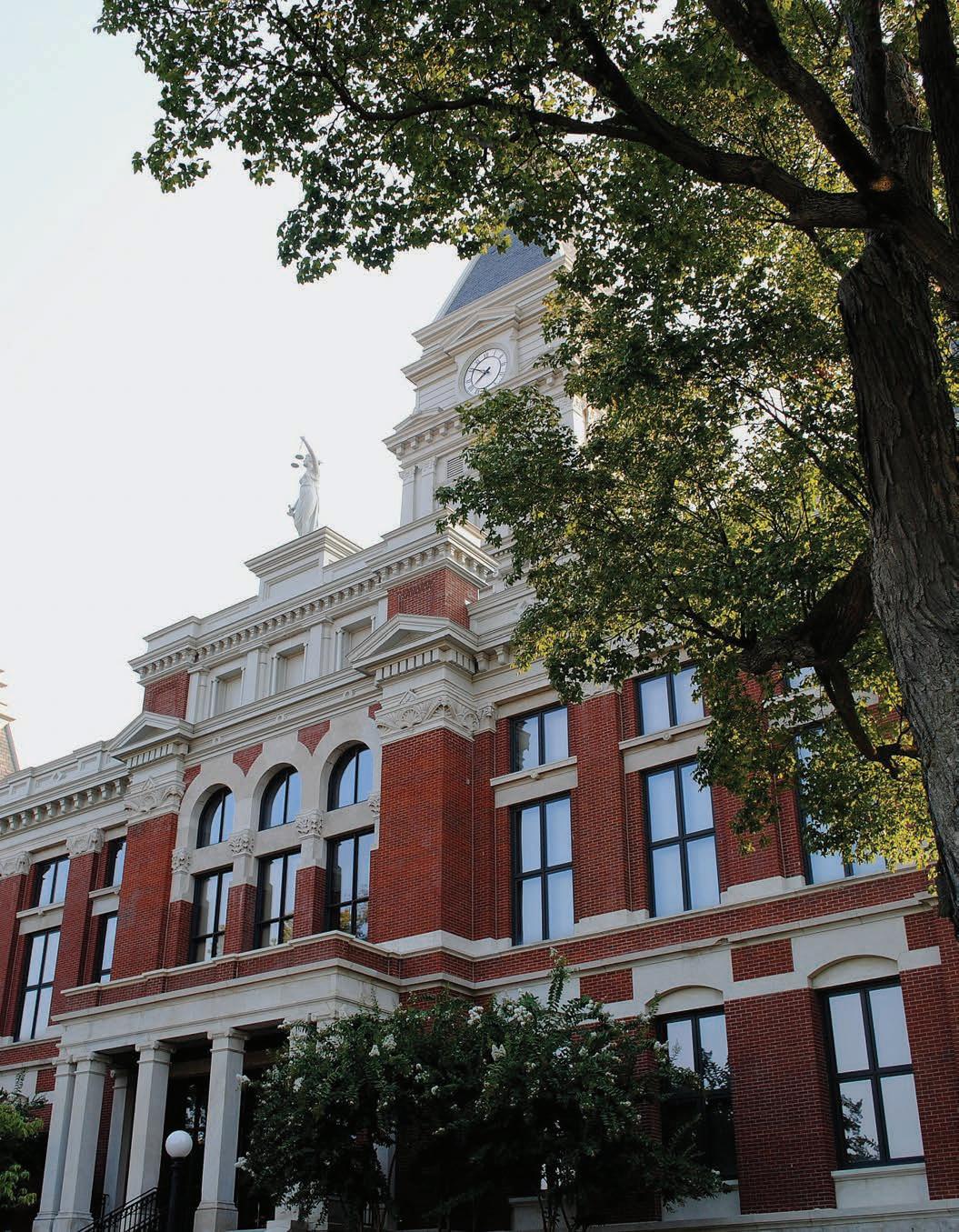
To our fellow Clarksville-MoCo residents:
We are a community of action. When our agencies were approached to partner with The Harwood Institute for Public Innovation to organize a study on education and opportunities for youth in Clarksville, we each asked for a commitment that after all the conversations, all the interviewing, all the analyzing, there be a battle plan to defend the potential of our children in the community so they can create their brightest possible future.
This report was crafted by working shoulder-to-shoulder and hand-in-hand with students, educators, community members, and leaders. We worked together to identify economic, educational, and civic issues in our community, and to discover people’s aspirations for the future. Moving forward, our work will generate action by organizing groups to build effective capacity for solving problems eradicating disparities.

Rich Holladay
Civic involvement—much like military service—forges a bond and vital connection that fuels a lifelong commitment to those we serve. And in this town, we all serve the community.
Clarksville can sometimes be seen from two different perspectives: those who’ve lived here for a while and those who are still very new. Both are valuable. Both are valid. We embarked on this project as organizers to gather the opinions and views of you, the community. It is our hope that through this study we could come to a comprehensive view of Clarksville and form a plan to catapult our community to the next level in an exciting and inclusive way. We wanted that plan to be reflective of the warm and authentic Clarksville culture that welcomes and draws so many into our city and circles. It is by stepping into the future, together, that we will unlock the potential in our youth and secure a strong future for our community for years to come.

Yolonda Williams

Chris Buerck
Executive Director, Leadership Clarksville
National Commander, Women Veterans of America
Executive Director, Big Brothers Big Sisters of Clarksville
Listen to the voices of Clarksville-MoCo.
You’ll hear about people’s deep love for this community. You’ll also hear about the community’s rapid growth and people’s desire to make it work for everyone.
Communities face a fundamental choice when it comes to growth: disparities and inequities can grow—in which case people get left behind and left out—or they can take steps to ensure everyone has real access to opportunities.
People in Clarksville-MoCo clearly want to provide opportunities to all their fellow community members. But how? As one leader asked, in a “growing, changing city, do we bring along all our talents and energies and cultures and personalities and diversity? How do we bring all that together? How do we aim that energy and make it work?”
During my thirty years of doing this work, I have seen what it takes for communities to move forward: enough people must make the intentional choice to step forward, turn outward toward one another, and set in motion meaningful actions that spread throughout a community like a positive contagion. They must pay close attention, not only to developing new initiatives and programs, but also to the civic strength and culture of their community.
We live at a time when people across our nation are searching for a more equitable, fair, just, inclusive, and hopeful path forward. They want to believe that we have the ability to get things done together. They feel a special urgency when it comes to the education of young people.
Purposefully stepping into the future in Clarksville-MoCo means doing more than simply celebrating—or bemoaning—the community’s growth. The community must build its civic capacities so that people, working together, can shape the community’s future. Efforts to strengthen education and the community must be spread throughout the community. Education needs to be seen not as the sole responsibility of the local public schools, but as the responsibility of the entire community.
In Clarksville-MoCo, you can feel an urge within people to find a way to step into the future— and to make sure all young people have the opportunity to fulfill their potential. Now is the time to step forward. It’s time to come together.

Richard C. Harwood President and Founder
In early 2021, Women Veterans of America (WVA), Leadership Clarksville (LC), and Big Brothers Big Sisters of Clarksville (BBBS) forged an important partnership with The Harwood Institute for Public Innovation to engage the Clarksville-MoCo community in creating a community-driven education agenda that would ensure every student has access to the American Dream. It would also strengthen the civic culture of Clarksville-MoCo to take effective, sustainable action. This effort is part of a national initiative supported by the Walton Family Foundation.
Over nine months The Harwood Institute, with the support of WVA, LC, and BBBS, undertook a series of conversations with community residents from twelve different neighborhoods across Montgomery County. Each conversation was held with cross-sections of approximately ten people. There were four additional conversations to delve deeper into issues that were surfacing from the initial conversations; one each was conducted with high school students, another with teachers, another with youth mentors, and one with individuals from across the county who could not make previous conversations.
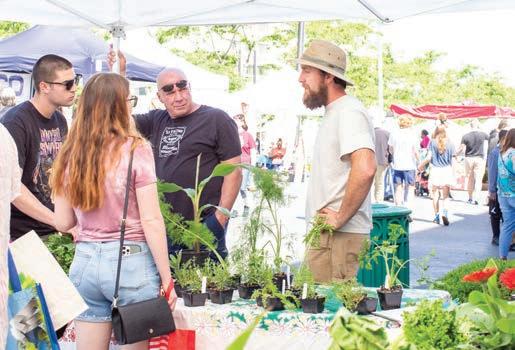
In addition, The Harwood Institute conducted thirty-six in-depth interviews with community leaders, which included elected officials and leaders from Clarksville-Montgomery County Public Schools, nonprofits, religious institutions, businesses, and other areas.
There are two additional points to make about how the report was done. First, each individual quote in the report was selected only if it represented larger patterns found in the research; the selected quotes come from across all of The Harwood Institute’s interviews and conversations. Second, to increase the report’s readability, we refer to ClarksvilleMontgomery County as Clarksville-MoCo.
Introduction
This section provides an overview of the report.
Our Voices
In this section, you will hear people in Clarksville-MoCo describe how they see and experience the community and share their hopes and concerns about the future.
Clarksville-MoCo’s Education Agenda
This section provides a seven-point education agenda to bring about a more equitable, inclusive, and hopeful path forward for all of Clarksville-MoCo’s young people and families.
Clarksville-MoCo’s Public Capital
This section is a snapshot and analysis of the fundamental structures, networks, and norms of Clarksville-MoCo through the lens of The Harwood Institute’s Public Capital Framework. The snapshot reflects what it takes for a community to work together effectively to achieve its goals; the framework was developed through the Institute’s research and on-the-ground work in communities in all fifty U.S. states.
Moving Forward, Together
This section lays out a shared path forward for Clarksville-MoCo to achieve its education agenda and strengthen the community.
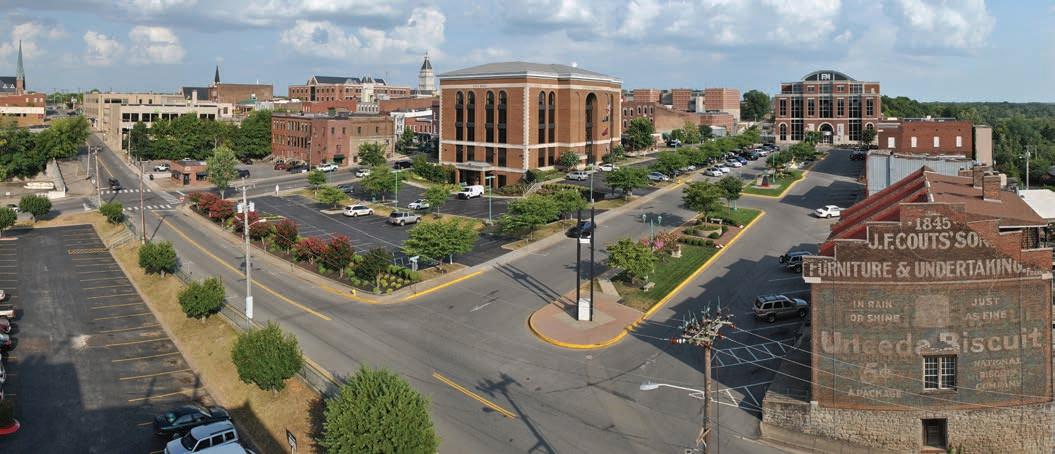
In 2019, Money magazine named Clarksville the best place to live in the U.S. Listen to the voices in this report, and it’s clear why. The people who make Clarksville-MoCo home love their community. Perhaps this is one of the reasons the community is enjoying unprecedented growth, but growth doesn’t come without its challenges.
How will Clarksville-MoCo manage its growth? Will everyone benefit, or will some people be left behind? This question is especially important for the young people of the community. Moving forward, just how will Clarksville-MoCo step into its future?
Fort Campbell is a key part of the area’s growth, and residents take enormous pride in the service members and veterans who make Clarksville-MoCo their home. At the same time, newcomers are now streaming in from Nashville and elsewhere. New housing and new schools and new roads are being built.
Amid this growth, you can hear residents, leaders, educators, and students calling for a new agenda for
Ensuring all young people can succeed is the responsibility of the entire community, working in partnership with the public schools.
education and the community—one that will enable every young person to fulfill their potential and for the community as a whole to thrive.
Real progress on this agenda will take shared community action. Let’s be clear: This is not a report card on the ClarksvilleMontgomery County School System (CMCSS). It is a report about the community of which CMCSS is a part. Ensuring all young people can succeed is the responsibility of the entire community, working in partnership with the public schools.
To move forward effectively requires squaring up with reality. Toward this end, our interviews with residents, leaders, educators, and students reveal three overarching themes that need the community’s urgent attention and action:
T he community must grow its civic capacities. Clarksville-MoCo’s growth has outpaced the civic capacities of the community. Too many organizations and groups work in silos. More leaders are needed—in number, in diversity, and in being deeply connected with the community. More spaces must be created for people to come together and do community work. Finally, the community needs more catalytic organizations and groups that span boundaries, bring people together, and spark action. Without the right civic capacities, Clarksville-MoCo’s growth may outpace the community’s ability to shape that growth, and too many young people will go without real opportunities.
It’s time to actively engage community members. Educating young people is one of the most basic functions of a community. How people see education and their kids is often a mirror for how they see themselves and their connection to the community. Without a strong connection, engagement in community efforts diminishes, public will for change recedes, and people lose hope. Today, too many people in Clarksville-MoCo do not believe that their voices matter, that there are enough open and honest conversations about education and the community’s future, or that they

are part of the community’s decisionmaking. Yet, the people of ClarksvilleMoCo love this community and want to help it prosper—for everyone. Clarksville’s people are a great untapped resource.
Fill critical gaps in education and young people’s lives. The people of Clarksville-MoCo want all young people to be able to fulfill their potential and successfully make their way into the world. Good progress has already been made, but there is more to do—much more. More students need mentors. After-school activities are essential. Teachers require better support. Mental health needs must be met. Local residents, students, teachers, and community leaders articulate a clear and compelling education agenda in this report. It is important to underscore that this agenda is not something to be laid at the schoolhouse door—as so many issues are nowadays—but rather it is a community agenda to be pursued in partnership with CMCSS.
Clarksville-MoCo is at a point that many communities can only hope to reach. They are experiencing continual growth built on a strong foundation of rich traditions, new people, an expanding economy, and an abundance of natural beauty. At the same time, it is like a teenager in a growth spurt—clothes too tight, bed too short, and sore from growing pains. The people we spoke with welcome Clarksville-MoCo’s growth, but it is not without discomfort and people are looking for a better fit.
Over the past thirty years, The Harwood Institute has learned that it is essential to meet a community where it is—and not where we wish it might be. Wishful
The people we spoke with welcome ClarksvilleMoCo’s growth, but it is not without discomfort.
thinking does not help to address real challenges, like young people needing more opportunities and support.
Communities move forward by growing new efforts, realigning existing ones, and expanding civic capacities over time. These efforts must be rooted in what matters to people and largely shaped and created by the community itself.
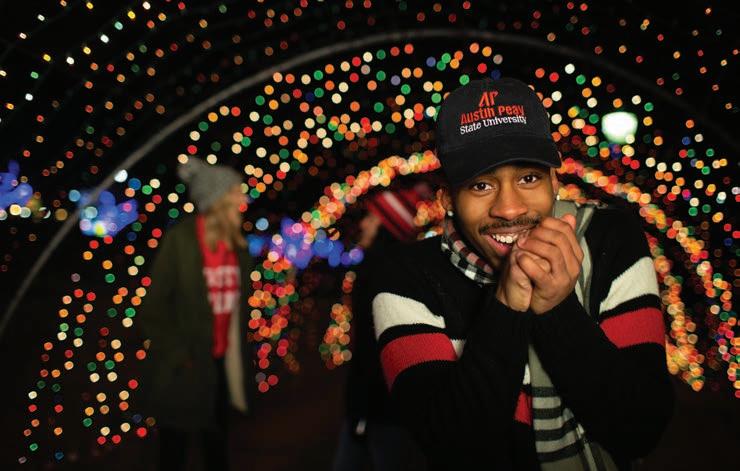
Short-term wins must be coupled with longer-term gains. People need to see progress along the way if they are going to engage for the long haul— especially in order to believe they can come together to get things done.
The seedbed for this growth is the development of strong, positive underlying community conditions— including trusted leaders, organizations, and groups that span dividing lines, productive norms of interaction, and a shared sense of purpose. When these conditions exist—when these civic capacities are present—a community can accelerate and deepen its progress.
Truth be told, most communities t ake a fundamentally different a pproach, pursuing a set of activities that takes them in a direction that fails to produce the progress they hope for. This is what The Harwood Institute typically sees happening in communities across the country:
Far too many community efforts overpromise and under-deliver, thus deepening people’s sense of frustration, even cynicism, and leading to lost hope.
C omprehensive plans get designed that are too big for a community to take on, failing to realistically take into account the capacities and needs of a community.
Communities move forward by growing new efforts, realigning existing ones, and expanding civic capacities over time.
Strategies are imposed upon communities from outside—often lacking critical local context and undermining people’s sense of local ownership.
L arge sums of money are expended long before anyone has a clear-eyed view of where investments are most needed or what it takes for those investments to succeed.
Over and over again, there is an unspoken assumption at work here: you can “fix” a community and its problems. This belief assumes people and their community somehow need to be fixed. It is as if people think persistent challenges of disparity and inequity can somehow be easily solved.
But no community or its people can be fixed. Communities reinvigorate and regenerate themselves by coming together and marshaling their resources, often in unexpected ways.

The education agenda presented in this report is from the community and is about the community. It calls for seven areas of action that will increase the likelihood that every young person has the opportunity to fulfill their potential. The agenda i s not a panacea but a path forward. It calls for action by both community members and CMCSS.
Getting on this path is essential to Clarksville-MoCo stepping into its future.
Along this path, Clarksville-MoCo must find new ways to work together. This will require people to turn outward toward one another and make the community the reference point for their conversations and actions. This is a different mindset; it puts people at the center of all that we do. Without this essential mindset, new ways of working together will be difficult to achieve and the way forward will be harder to find.
Clarksville-MoCo’s next steps regarding young people and education are critical; how the community does the work is just as important.
The Clarksville-MoCo community is on the move. People hold a great fondness for the area and hope for its future. At the same time, they point to significant challenges the community must address if all young people are to succeed and the community is to thrive. The voices of the community—from residents to students, and from teachers to civic leaders—reveal the need for people to step forward and work together.
People in Clarksville-MoCo hold a d eep affection for the community. “It’s got a small-town feel, even though it’s really growing,” one resident said. “I treasure that.” Another said they loved Clarksville’s “familiarity,” the local feeling. “I feel loved in the community,” one person told us. “I love others in the community. Clarksville has been one of the best experiences of my life. I’m ingrained in the community.” People across the county repeatedly said, “Clarksville is a great place to raise a family and have your children grow up.”
Veterans who originally came to the area because of Fort Campbell say the community has welcomed them as they made Clarksville-MoCo their permanent home. One veteran said, “When I got
“It’s got a small-town feel, even though it’s really growing.”
out of the military in 1999, instead of going back to New Jersey, I decided to stay here because I wanted my son in this community, and I wanted him to be a part of the school system.” A high school student whose family “had to move a bunch” told us he liked “the schools, the places here.” Many people appreciate the value of living in a “university town” and in the proximity of multiple higher education institutions. “We have Austin Peay State University, which is a great university,” one local leader said. “We have a community college. We have the College of Applied Technology.”
One resident summed up people’s love of Clarksville-MoCo with a comparison to the loyalty found among military service members. “Clarksvillians will come to the aid of one another,” they said, with “each neighbor having each other’s back. That military mantra of ‘No soldier left behind.’ That’s the attitude of our neighbors as well.” Clarksville-MoCo is seen as a great place to call home.
With so many community members currently or formerly stationed or working at Fort Campbell, almost everyone we talked with had connections to service members and veterans. Reflecting on these relationships, one leader said, “a lot of communities do not embrace their military. Clarksville does. It’s amazing.” The military is deeply embedded in the community and Clarksville-MoCo residents express a genuine appreciation for the sacrifices made by service members. This spirit of patriotism especially manifests itself on the Fourth of July and Veterans Day—two of the community’s most celebrated days each year. High school students said their Veterans Day assemblies are always filled with energy and packed with people. One local veteran said, “All of us— all of us —have had a great hand in making this nation the great nation that it is. We’ve all played a valid part. We all have fought for the freedoms that we share.”
Fort Campbell and Clarksville-MoCo enjoy a strong, interdependent relationship. A resident explained, “One thing our community—our local governments,
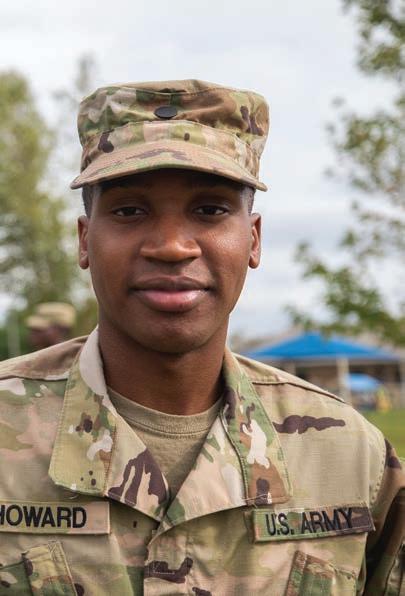
our county, our city, our school system— have done exceptionally well is building a relationship with Fort Campbell and trying to take care of the members of the armed forces there.” A few years back, the town and military communities joined forces to fight for Fort Campbell to stay open. “We literally knocked it out of the park,” said a leader of the effort.
“That military mantra of ‘No soldier left behind.’
That’s the attitude of our neighbors as well.”
“It’s considered a place where individuals from all walks of life, anywhere in the world, come and never leave. We love it so much.”
Many residents see the positives of Clarksville-MoCo as being both “transient” and a “melting pot”—a population continually infused with new people and their talents and energy. One big reason for this is Fort Campbell, which brings in people from all over the country who possess a wide range of backgrounds and lived experiences. “Fort Campbell makes the community really interesting,” a high school student said. “There’s always people rotating in and out.” A resident said, “Fort Campbell doesn’t just live at Fort Campbell. We have built this partnership with people from all over the world and it expands our knowledge and abilities.”
In more recent years, Clarksville-MoCo has seen accelerating growth as newcomers with no military affiliation stream into the area, many arriving from Nashville, along with other regions. “Clarksville is a haven,” one leader said, describing why newcomers so frequently end up staying. “It’s considered a place where individuals from all walks of life, anywhere in the world, come and never
leave. We love it so much.” A high school student said they like that a growing mix of people can be found throughout the county. “You can’t just go to one area,” and say, ‘That’s where these types of people live.’” One Clarksville native with a long local family history in the community said the newer arrivals who “came and set roots and brought their roots, have made Clarksville a whole lot better.”
People across the community laud the array of unique educational opportunities for youth, starting in elementary school. One CMCSS elementary school has a robust Spanish Immersion program where “a child coming into first grade speaks Spanish 80-90% of the time,” a leader said with pride. A resident was pleasantly surprised by the program, saying “who would have thought” that such a “forward-thinking” program would come to Clarksville. Elementary schools are also working to jumpstart job shadowing opportunities and some schools have specialty areas, such as STEM.
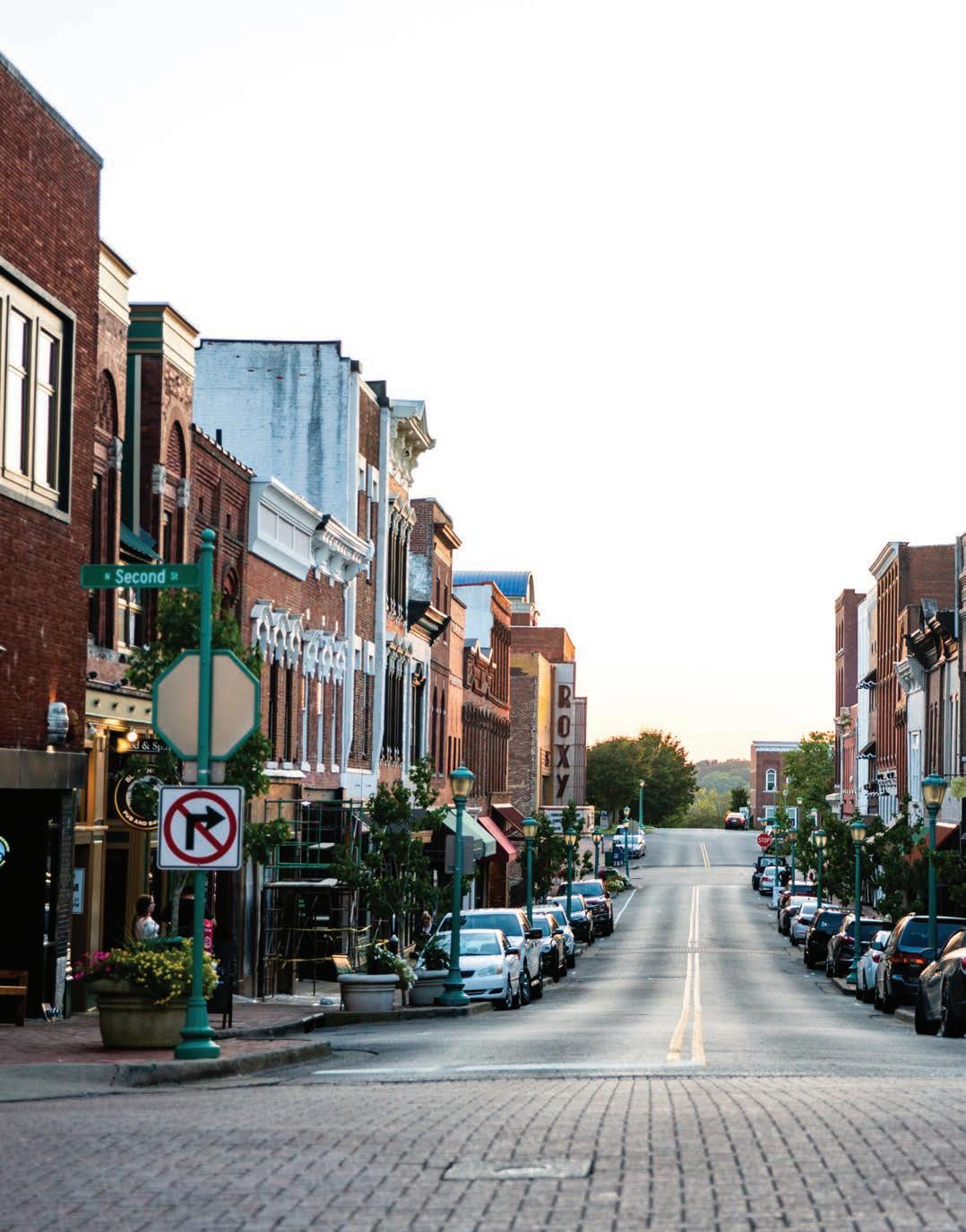
An even larger assortment of opportunities are available to high school students. A student “can apply for an academy that will give them the education they need and what they want,” a leader explained. High schools throughout the community host different academies that focus on a variety of career paths. Austin Peay State University also provides promising opportunities to young people. One leader explained that the university’s “Middle College is a high school on campus” where students can get a head start on their college education. All of these opportunities are designed to give young people “choices on what they decide to do in life,” said an education leader, “so they can learn about areas they’re interested in.”

“For most places, there’s only one way to get there. There’s only one street you can take, maybe two.”
When Clarksville-MoCo residents are asked to describe the community, one of the first things nearly everyone mentions is its rapid growth in recent years. New arrivals are coming to town, attracted by the reasonable cost of living, proximity to major cities like Nashville and Louisville, and the growing corporate presence. “The economy’s booming,” said one leader. People describe Clarksville-MoCo as “vibrant,” “alive,” and “thriving,” with one leader exclaiming the community is experiencing a “golden era.” A resident echoed this sentiment, saying, “economically, Clarksville is one of the best places in the United States to be. The Tennessee environment and the growth just makes this a golden opportunity kind of place.” While most people in the Clarksville-MoCo community celebrate this growth and the economic benefits, they also took note of the area’s struggle with “growing pains.”
Many residents mentioned the problem of increased traffic, especially during rush hour. “For most places,” a high school student told us, “there’s only one way to get there. There’s only one street that you can take, maybe two. And that’s why they get so backed up.” High school students complained about how roads like Rossview are always clogged after school. Meanwhile, public transportation has not kept up with population growth. “Bus is the only option, and it doesn’t go everywhere,” one leader said. Because the community is spread out—from Fort Campbell, to downtown, to the outskirts
of Montgomery County—citywide transportation upgrades are difficult. “You really need to have a car to thrive,” said a resident. Walking is not a viable option because main roads do not have sidewalks. Another said, “We want to have walkable spaces; we want to be able to walk to work, walk to school.” Currently, this lack of walkability also makes it hard for kids to socialize. “If you don’t have kids on your street,” one resident said, “you don’t hang out with kids after school.” A local leader told us that in response to this particular challenge, a city ordinance has now been passed requiring the inclusion of sidewalks along all new city roads.
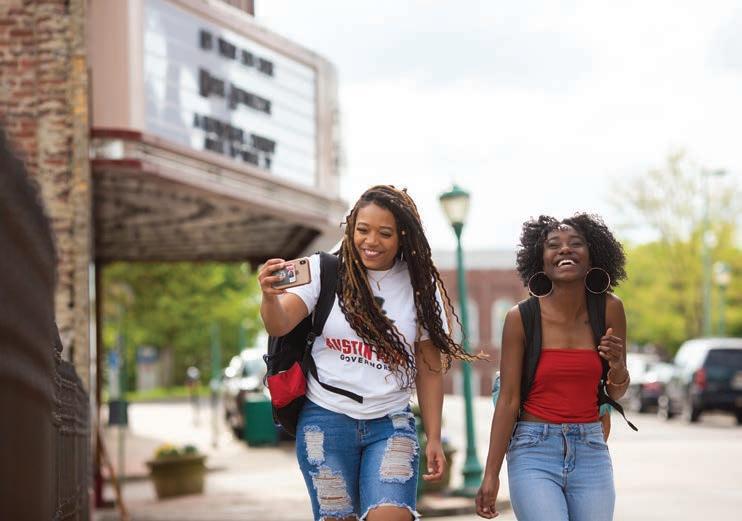

As the inflow of new residents continues, another persistent growing pain is the strain on housing inventory, along with challenges the community faces in planning effectively amid growth. Those we talked with described a scramble to get new neighborhoods and housing complexes built, and some residents worry that housing is being developed without sufficient consideration of the implications for the school system and the future of the community. One resident commented, “It cannot just be one big suburb with no center. You’ve got the base over on one side of the county and then you’ve got downtown, which is a sprawl, then you’ve got the mall area and the Sango area out to the interstate. There’s no central hub to build the community around.” Many people noted that local officials are seeking to address these challenges, but they expressed concern that current growth i s outstripping efforts to manage it.
When it comes to providing activities and places for young people to gather, people said Clarksville-MoCo needs to create more opportunities for youth and these opportunities need to reach more youth. One resident said, “I don’t think that’s kept pace with how much the community has grown.” Another pointed out that Clarksville only has one mall and one small museum, and that young people struggle to find places to meet up. Indeed, a resident said, “I don’t see a lot of things for kids and teenagers to do.” A high school student told us they can only talk to friends “through the phone or at school because there’s really nowhere else we can really go.”
A 2013 Austin Peay graduate said local youth have fewer things to do than they did in the past and “they’re bored. … It’s always been a town for the military, but they have never really catered to the youth.” Another resident said even the places that do exist are “so out of
the way, and most people’s parents d on’t want to make that drive.” To help its young people grow, an array of activities must be made available and accessible to youth.
Residents expressed concern about the overcrowding of Clarksville-MoCo’s public schools. One said, “We’re growing just about at an elementary school every other year.” Another looked ahead to the ripple effects from such growth: “They built a couple of elementary schools, but those kids still need to go to middle school and high school.” And others noted how those ripples create the need to “get more teachers, improve our numbers” and for “finding the qualified staff and keeping the pay scale to keep the qualified teachers.” As the school system faces these strains, there is also concern that overcrowding leads to “pushing through on the cattle herd just to try to get them through the system,” as one resident put it. Another summed it up simply, saying that even with a new high school being built in Kirkwood, “the school system is not keeping up with growth.” Several concerned parents discussed problems with school transportation. One parent said, “For the past two weeks, my son’s school bus has been not showing up, or picking them up an hour and a half late. And it’s not only his school bus. We are short a hundred school bus drivers.”
As new people pour into town and new neighborhoods spring up, some residents and leaders are concerned about a shift away from Clarksville-MoCo’s small-town identity and culture. There is excitement about growing population and diversity, but people told us they’re longing for ways to maintain that feeling of “familiarity,” and the likelihood of seeing familiar faces. “People here remember your name,” a resident said. “It just seems super easy to integrate and make friends and connections.” However, as more and more people move in, that tightknit sense of place is getting harder to maintain. “We need to establish a sense of identity, what Clarksville really wants to be,” one resident said, “unless we just become a bedroom community of Nashville. We need to gain an identity.” As the city expands, how does it evolve its identity?
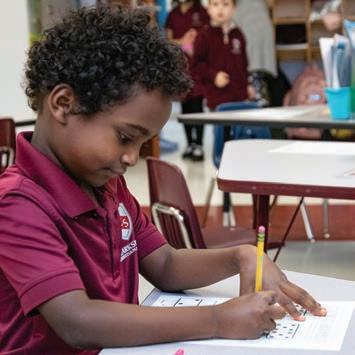
Like so many parents around the country, Clarksville-MoCo parents are struggling to be the best supporters of their children’s education. Many are juggling multiple jobs, taking care of several kids, and making ends meet. Some parents told us that they, or those they know, are “just trying to go to work and survive,” as one parent said. This juggling act became even harder during Covid. For some parents, finding the time to help their kids navigate online schooling was hard to manage or frankly undoable. Suddenly, moms and dads had to face the task of “researching what may be out there available,” in one parent’s words, to support their child’s education and home life during the pandemic.
For some parents, a lack of information is as big an obstacle as a lack of time. Further, “some parents are not sure exactly what they need to do to advocate for their children,” a resident told us. Another said “conversations about education are foreign” to many parents. To bolster parents’ capacity to support students, one resident suggested, “starting at the parents’ level, helping them with options that are available that they could also do to help get their kids on the right track.” Even parents who are involved in their kids’ education are sometimes unsure how to engage with the school system itself. One parent said they hadn’t

heard about any PTA meetings in years. “I don’t even know if those are widely used in schools anymore.”
While some parents feel overloaded— even overwhelmed—some “don’t understand the ramifications of them not being a part of their child’s education,” one leader told us. “Recently, we had a student who graduated high school and nobody from his family showed up. But the kid graduated. His classmates made sure that he was recognized and let him know that he was somebody.” As in every community, the question in ClarksvilleMoCo is: how can more parents become engaged in their children’s education?
Most people described Clarksville-MoCo as a community comprised of different neighborhoods and areas, each with its distinct culture. They say that these different places possess varying levels of resources and opportunities available to them. A high school student said, “There are definitely neighborhoods that people look down on or up to like, ‘You live there? You must be rich,’ or ‘You live there? You must be poor.’” But people say these differences go beyond perception to bias. A resident explained, “Different areas of the city get different attention based on who lives there.” Another said that people have to work with “what’s available based on where you live,” explaining that “certain sides of town have a YMCA and other ones don’t.” One resident said, “As we talk about the city of Clarksville growing—and new jobs and money and opportunity— there are areas like New Providence that haven’t seen a whole lot of anything. They can’t even get sidewalks.” Food insecurity is also a problem for some neighborhoods. “Depending on what side of town you’re on, your grocery store experience is much different,” one leader said. Residents and leaders we interviewed routinely said that different parts of the community fail to receive equitable resources.
Neighborhood differences are also seen between schools. “There’s always a disparity of resources from school to school,” said a leader. People told
“Certain schools just have more. Certain schools are not as crowded or are more upgraded.”
us that it is common knowledge in Clarksville-MoCo that “certain schools just have more. Certain schools are not as crowded or are more upgraded,” as put by one resident. Another said the schools that tend to serve more transient populations are “probably not getting the same resources as a school that’s not transient.” People also frequently noted the disparities between school facilities. “When you talk about which schools are ‘better’ it’s because this school has a whole extra building dedicated for sports, and this school barely has a regular gym open,” a resident said. And a teacher told us they want “every child” to know that “no matter who they are, where they come from, they can do better.”
But the separateness in where people live often makes these discrepancies nearly invisible to many. “If you’re living on a certain side of town,” one parent said, “you’re not experiencing all of this. You’re on this side of town and you got all the money and all this stuff. But you go to these other schools, and the kids are suffering because nobody’s advocating
for them.” Meanwhile, people told us that higher-income areas usually have more active advocates and parents, more connections to the school board, and a history of receiving resources. One parent said they “noticed the blatant disparities between our exit and the other exits. So, I tell my son all the time, you’re very privileged because you live in this exit. It’s just a huge difference.”
People say that Clarksville-MoCo’s growth and its longstanding challenges demand new attention and new approaches, but the community’s civic capacity is not up to the task—at least, not yet. For example, several people noted that decisionmaking power sits largely with a small group of leaders. This group “supports each other,” as one leader put it. “They own the businesses. They control the information.” Some talked about a group of so-called “royal families,” a phrase we heard in many conversations. A resident explained that people with decisionmaking power are “those who have been here for generations. They’ve made those connections, made those partnerships.” Indeed, one person after another told us that power resides in knowing the right people. “It’s a lot of who you know,” as a leader said. When it comes to education, business as usual has meant decisions are made by a small group of leaders, many
of whom “don’t have a dog in the fight ... don’t have a kid in the school system,” as one leader observed. Too few of the decision-makers “live in the communities and really understand what’s going on,” said a resident. Moving forward, people told us Clarksville-MoCo needs a greater diversity of leaders, and ones who are deeply connected to the community.
Another important channel for civic change is open discussion between leaders, policy makers, and community members; but residents—and even leaders—told us, opportunities for engagement have not been widespread. Though living in the community for many years, one resident said, “I don’t ever recall there’s ever been a true public forum.” A leader said that most people lack “a strong place to weigh in.” Another resident added, “We need to have more opportunities where people can get their points of view to the people that can make the difference.” There are some who told us that even if more opportunities to engage are provided, then more residents will need to make the effort to engage.

One person worried specifically about the lack of civic examples and role models for Clarksville’s young people, saying, “We need to start teaching our kids to be effective as citizens again. The only thing we’re teaching them now is to be victims and employees.”
Another characterized the state of civic engagement in Clarksville-MoCo this way: “There’s just a real disconnect. The community is very situational and transactional. They’re very involved when there’s an issue. But when there’s not an issue, then it’s all about my child and my family.” One resident said, “People don’t even know what it looks like … what they should be doing to even ask for change.” Finally, another said simply, “What we need to figure out, is how to get people engaged.” Indeed, as Clarksville grows, so too must its civic fabric and people’s involvement.
Even with its growing pains and challenges—or maybe because of them— Clarksville-MoCo community members maintain a hopefulness that you can hear in the community’s many voices. A resident who was raised in Montgomery County, left the community, and then came back to raise their children said, “I’m quite hopeful. If I wasn’t, I wouldn’t have come back here, and I wouldn’t stay as long as I have.”
Another voiced their hopes for ClarksvilleMoCo’s young people even amid the area’s
“We need to start teaching our kids to be effective as citizens again. The only thing we’re teaching them now is to be victims and employees.”
challenges, saying, “I want them to know that there is a world of possibilities outside of their current situation. I want them to know that they are able to do so much in their future and I want them to know all of those options.” A local teacher said she holds the same hope for her students as she does for her own child: “I have two boys, one of them is going to be in kindergarten next year. And so I am very hopeful that he’s going to feel the way that I want my kids to feel when they leave my classroom.”
Of course, there is work to be done to make this hope real for all of Clarksville and Montgomery County. As one resident called out, “We need to figure out how to get people engaged. The people that are in this conversation clearly are engaged. You want to be better, you want to do better, but the person to your left and to your right— your neighbors, your friends, and other people—how do we unlock that?”
The people of Clarksville-MoCo want to ensure that all young people can reach their full potential as their community continues to grow and change. For this to happen, every part of the community must take intentional actions to engage parents and young people. They need to provide the necessary support for students, families, and teachers. They must address the inequities that leave some families and neighborhoods behind others. With growth comes added pressures—and these pressures will also grow if people don’t take action.
Progress will come only when the community does its part, working in partnership with the ClarksvilleMontgomery County Public Schools.
All young people and families are valued and supported with the resources they need to succeed in school and life.
Based on our conversations and interviews, people in Clarksville-MoCo are calling for a seven-point education agenda to set a more equitable, inclusive, and hopeful path forward for all of Clarksville-MoCo’s young people and their families. This agenda is rooted in the community’s shared aspirations.
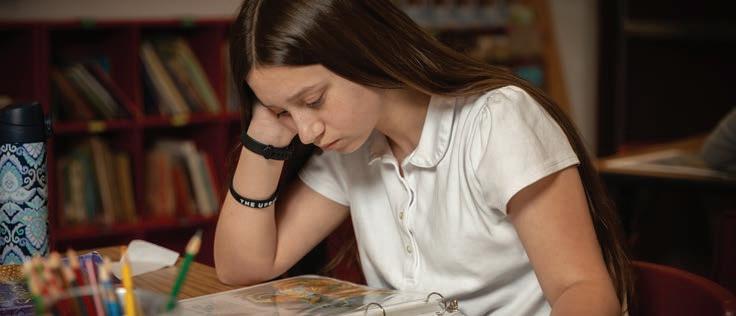
Residents, leaders, teachers, and students all want more robust engagement among parents and students. Such engagement must be at the heart of every effort to ensure all young people can fulfill their potential and Clarksville-MoCo can thrive.
To engage parents and families, the community needs to recognize that people across Clarksville have different needs and face different obstacles. Some parents tell us they are stretched and lack the time to be involved in their children’s education; others say they do not know how to be involved; and most say that they and their neighbors see too few opportunities to meaningfully interact with teachers and the school system. Indeed, some told us that all of these factors impact their lives. People are calling for the schools and the greater community to:
E ngage parents and families in how to support their child’s education. The community, school district, and each individual school should provide parents with more ways to support education at home and in partnership with educators and community groups. A leader said, for instance, “If the school had people in place to help educate the parents and literally tell them, ‘This is how you can do this, and I will help you do it,’ that affects
change.” A resident remarked, “You can say ‘The door is open; everyone is welcome,’ but if not everyone can get there, or not everyone feels educated enough and confident enough to get there, then all things aren’t equal.”
An all-out effort is needed to support parents in being active and advancing their children’s education.
Inform parents and families of their opportunities and options. Many families face a variety of education choices: which school or academy to attend, what programs or after-school activities to pursue, or what paths to take for post-high school success. But a lot of families “don’t know how to get their kids opportunities,” one parent said. This challenge of awareness and access was a common theme. Information is power, and many people feel powerless. CMCSS and the community must work to ensure that all parents know about and have access to various opportunities.
Make room for parent voices in decision-making. Many parents feel they are not “empowered to take part in their school system” and that they are at “the whim of what the school system is going to tell them to do,” a parent told us. Meanwhile, many schools do not have active PTAs, and as noted elsewhere, there are not many opportunities for families (and, importantly, the wider community) to
engage in open conversations about the role of education in people’s lives and the life of the community. One parent, who is a community leader, told us: “We need parents and others who are extremely involved in the school system to start being part of the decision-making process.” More authentic engagement opportunities must be created in Clarksville-MoCo; these engagement efforts must go deeper than communicating options to families and beyond simply informing parents about how to support their child’s education.
Make young people partners in their own education. Students want to be more actively engaged. A high school student shared that “most of us feel like we don’t know what’s going on. They tell us things at the last minute.”
Students we spoke with said school announcements, in the building or on the school website, often do not reach everyone. Beyond basic school communications, students said they want to have their views heard and their ideas taken seriously. And while Clarksville-MoCo engages some of its young people effectively—for instance through the Mayor’s Youth Leadership Council and Youth Leadership Clarksville—these opportunities serve only a limited number of student leaders. Many students want to be heard on things that affect them. “They don’t hear our opinions, and they
“We need parents and others who are extremely involved in the school system to start being part of the decision-making process.”
don’t see that we could help. They just think of us as students,” one shared. Another said: “There just needs to be more cohesiveness between the staff and the students. … We may not have their experience, but we can think out of the box since we’re young.”
A parent added, “Sometimes we as parents and adults think we know what they need, and sometimes I learn from my daughter, when I ask a few more questions, that what I may think is definitely not how she’s thinking.”
For education to be a community enterprise, wider engagement is not optional. Parents and young people need to be trusted partners with ClarksvilleMoCo’s institutions, educators, and leaders. The benefits of such engagement will grow over time, as a school leader explained: “The more familiar the conversation is, the more natural it becomes, and the more authentic and effective it is.”

People across Clarksville-MoCo want young people to have more activities and more places to go after school. This concern—this clear call for action— came up in virtually every conversation with residents, leaders, teachers, and students. Everyone agrees that the community must address this need if young people are to thrive and succeed.
A resident lamented, “If a child is not interested in sports, then there’s really nothing. That leaves them home idle, to do nothing after school.” A student said most opportunities are “limited” and young people need “more opportunities, so, if things don’t work out the first time, there’s always another opportunity.” Two others said that “chill spaces are few and far between” and “kids need more of a
place to hang out.” But there is even more to the reasons why young people need activities and places to go after school. As one resident put it, “A lot of kids lack knowing how to function amongst others. They need help with that.”
Parents and other residents argued strongly that the community must create more after-school activities and places to go for Clarksville-MoCo’s young people.
One observed, “We only have one museum here and a few historic sites,” and another resident said, “it would be nice to have a lot more cultural things that young people can go to and we could be more culturally aware of things.” Another pointed out, “Youth don’t have structured activities and things to keep them busy. The community can definitely help with that. Schools can help with that.” They suggested places like “community centers” and “businesses” could get “involved to step up and sponsor an afterschool activity, like if you want to grow up and be an entrepreneur, this is what it means and you start your own business.”
“They don’t hear our opinions, and they don’t see that we could help. They just think of us as students.”
“Youth don’t have structured activities and things to keep them busy. The community can definitely help with that. Schools can help with that.”
An individual who works at Fort Campbell said they have “awesome programs” and that they’re “really empowering their youth. They let the youth have a voice, they let them run programs. We do not have that in Clarksville. We haven’t given our youth a voice.”
The high school students we talked with said young people are ready to get more involved, to create more activities and clubs so they have more things to do; but they need help overcoming obstacles. To start a club “they need a sponsor,” one student pointed out. “They need a teacher to back them up. And it’s usually pretty difficult to find a teacher, because the teacher has to devote time to planning and hosting the meetings.”
A s noted elsewhere, teachers already feel they are under intense pressure.
It’s time for Clarksville-MoCo to expand the number of after-school activities and accessible places to go for young people. Part of this must happen in the schools; much of it should be a shared effort by the whole community.
Many of Clarksville-MoCo’s young people and families wrestle with poverty, stress, trauma, and isolation. Some of these are longstanding challenges exacerbated by Covid, while others arose during the pandemic. The need for more mental health and mentorship support is often a hidden need, but it requires more attention, greater social acceptance, and a shift in mindset and priorities.
A resident explained that helping kids manage their stress requires new


approaches. “Book education and social-emotional education are two different things,” they said. “You can focus all you want on the alphabet and arithmetic, and that child still does not know how to manage their stress or talk intelligently about how they’re feeling.”
Another pointed out that challenges at home—such as having a parent deployed overseas—can spill over into challenges at school. “Many students, especially those with a lot going on at home, won’t be able to succeed in school until they deal with trauma or social-emotional issues,” they said. Still others explained that local students lost teachers, bus drivers, family members, and others during Covid and “don’t know how to process grief.” A leader told us, “It’s very important that when it comes to education, we don’t just focus on what we’re teaching our students, but also ask, ‘what are they dealing with?’”
The public schools have worked to lower students’ barriers to mental health support, but more efforts are needed to ensure adequate levels and that all
students have access. A high school student said, “There are posters around the school, but it’s just to get help over text.” Another expressed the need for “real, actual help” and the need to have mental health professionals “within the school.” Some people told us that the current system includes counselors who care, but who often spend “too much time on testing and not enough time on working directly, interacting with youth,” as one leader said.
Like so many people, Clarksville-MoCo’s young people and families are often held back by the perceived stigma of seeking mental health support. A high school student expressed the need for “a cultural and societal shift in the mindset in the view of mental health. It’s still a taboo topic.” A resident said that talking with students about the need for such support is vital, “so schools can truly understand what’s going on and that it can become a more comfortable topic.”
A high school student told us that no one “really talks about this in the classroom.” Instead, “people go to their friends”
because they believe that going to counselors or their parents “won’t help,” so “they go to the people they trust.”
Though some mental health support is offered in Clarksville, more is needed.
Mentorship is another critical support for young people. Various local groups like Big Brothers Big Sisters, sororities and fraternities, and local businesses have been working hard to provide youth mentorship. A high school student said, “I learn a lot from other people and their experiences— mom’s friends and community members.”
Yet we were told many young people lack such opportunities. A resident said, “If your kids are at home a lot by themselves, no one’s checking in on them about their work or asking them about their day. That could allow them to fall through the cracks, get behind on their work, and not be fully engaged in school.” Mentors we spoke to said that isolation and a lack of guidance can create behavioral issues for young people, or a loss of faith in themselves or their future. “Every student in Clarksville should have the opportunity to be mentored by someone who cares about them and believes in them,” said one.
Clarksville-MoCo needs more early childhood education opportunities, and these opportunities need to be more accessible to all people across the community. The community is currently behind in meeting t his need, and the need will only grow as the area continues to expand.
People believe in the importance of equipping children early to succeed and thrive in the future, and they see pre-k as being an essential part of that good start. A community member said, “Pre-K becomes vital to the child’s learning” because “their mind is so fresh.” This individual said pre-K “gives them such an advantage.” A child development specialist in our conversations emphasized that a good start involves not only teaching young kids their “ABCs” but also paying attention to “social and emotional learning” and that there are practical “steps to teach it.”
But demand for pre-K far exceeds supply in Clarksville-MoCo. And that demand is only expected to increase as new
“Many students, especially those with a lot going on at home, won’t be able to succeed in school until they deal with trauma or social-emotional issues.”
“Every student in Clarksville should have the opportunity to be mentored by someone who cares about them and believes in them.”
families move into the area. A leader told us their school’s pre-K program has a “waiting list a mile long, and we used to joke that, ‘Hey, when you find out you’re going to be having a family or expanding your family, as soon as you call your doctor, call our pre-K and get on the waiting list.’ Now it’s, ‘Hey, if you’re going to go to premarital counseling or think you might get engaged, go ahead and sign up!’” Clarksville does have pre-K programs, including the Head Start program and foster grandparents program supported by the United Way of the Greater Clarksville Region, among others. However, the community funding or resources currently flowing towards pre-K are not nearly enough.
Access to pre-K is an equity issue— opportunities are not even across neighborhoods or family income levels. A resident said, “We have a large group of children who have never seen a book and have never had that early learning experience.” Many parents are simply stretched trying to make ends meet. A resident said, “It’s not the parents’ fault that the only job they can get is

a 12-hour warehouse job.” Accessible early-childhood education is pivotal “for our youngest learners—zero to five years old—before they go into kindergarten,” another pointed out. Yet there are gaps that must be filled: “We don’t have enough funding and that’s something I feel like our community could really get behind,” a resident said. People in Clarksville-MoCo are calling for the community to work together to expand pre-k and ensure that every child has access to these programs.
Teachers in CMCSS schools are under pressure from multiple directions—from Covid to new challenges facing young people and families to new educational requirements.
Teachers in CMCSS schools are under pressure from multiple directions—from Covid to new challenges facing young people and families to new educational requirements. Teachers need more support. A leader said, “I know it’s tough for teachers’’ as they must juggle teaching educational material while working to “help with students’ everyday experience at school.” The job of supporting Clarksville-MoCo students became even more difficult during the pandemic, where teachers “worked hard to make adjustments, pivot with education, and offer support to students who needed it.”
All of this extra work and stress has taken a toll. Another leader said that whenever they talk to new or existing staff they find them “overwhelmed with all of the work that they’re having to do.”
Despite these increasing demands on their time, teachers said that they and their colleagues need—and want—more
training in recognizing when students are facing social-emotional challenges or experiencing trauma, and learning “how to bring a child down from a traumatic moment.” Trauma-informed teaching is especially vital in Clarksville because it is a military community, as this leader explained: “We have moms and dads come back from war with PTSD. Some don’t come back” and “all that is in these little people’s hands.” Teachers want more support “to understand the background these kids come from.” As noted elsewhere, counselors, mentors, and others also need to be fully and realistically accessible to everyone for young people to receive the support they need.
Teachers also feel impacted by increasing official requirements—and they seek relief. One teacher put it this way: “You have a lot of people who are not educators trying to determine how education works. It adds a lot of pressure to teachers; it adds a lot of pressure to schools, to meet standards that are unrealistic for teaching.” Educators and non-educators echoed this sentiment.

One leader said, “We have a lot of folks who don’t actually want to understand the system. They want to disrupt it, and they want to put burdens on it with standards and testing. Rarely do they follow up that extra burden with extra resources.” A teacher said they were exhausted from all the requirements such as lesson plan reviews and multiple classroom observations. They complained about having to “check off these little boxes” and said, “I know how to do my job. Just let me do it.” A leader suggested that “actually having the input of teachers when standards or guidelines are set—having the input of the people who actually do the job—would be helpful in trying to make decisions.”
There is another form of support that CMCSS teachers need: financial. The
community needs to “find the funds to pay for good teachers, to keep the teachers in,” as one leader put it. A resident said, “I have tons of teacher friends” and they “don’t get paid what they’re worth for the job they do,” and also mentioned that they “pay so much out of pocket” to make sure their students have the supplies they need. Another leader said that there are so many “obstacles for teachers to have to run around in order to do what they’re passionate about.” And a high school student explained that “living here has made me realize that education is important and, without the teachers, I would not be the person I am today.”
Supporting teachers should be a significant—and a shared—effort for the entire community.
“Even though my school is diverse, I didn’t have a teacher of color until I was in high school.”
People across Clarksville-MoCo say that local public schools need more diverse teachers. Many school districts across the nation are wrestling with this challenge; Clarksville-MoCo is no exception. A student shared, “Even though my school is diverse, I didn’t have a teacher of color until I was in high school.” A resident said, “My daughter went to an elementary school where nobody looked like her. That’s a sad, sad thing. There are schools where 40-50% of the population are minorities and you only have one minority teacher in the building.” One student said a teacher of color could “relate to me on a deeper level and share different
experiences. Maybe they could help me more than someone who isn’t of color.” The presence of male teachers is also important and in need of a boost.
One of the district’s key recruitment initiatives for teachers of color is “Grow Your Own,” a partnership with Austin Peay, Nashville State Community College, and Lipscomb University that offers various career pathways in education. CMCSS clearly recognizes the teacher gap that now exists, but more work needs to be done.
By providing more teachers who look like the community, Clarksville-MoCo can, according to one leader, “help kids’ self-esteem and with their aspirations— because they see people like them in leadership roles.”
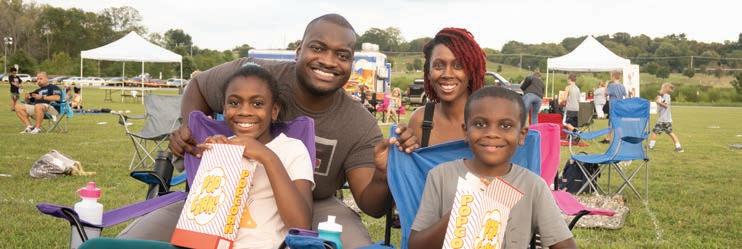
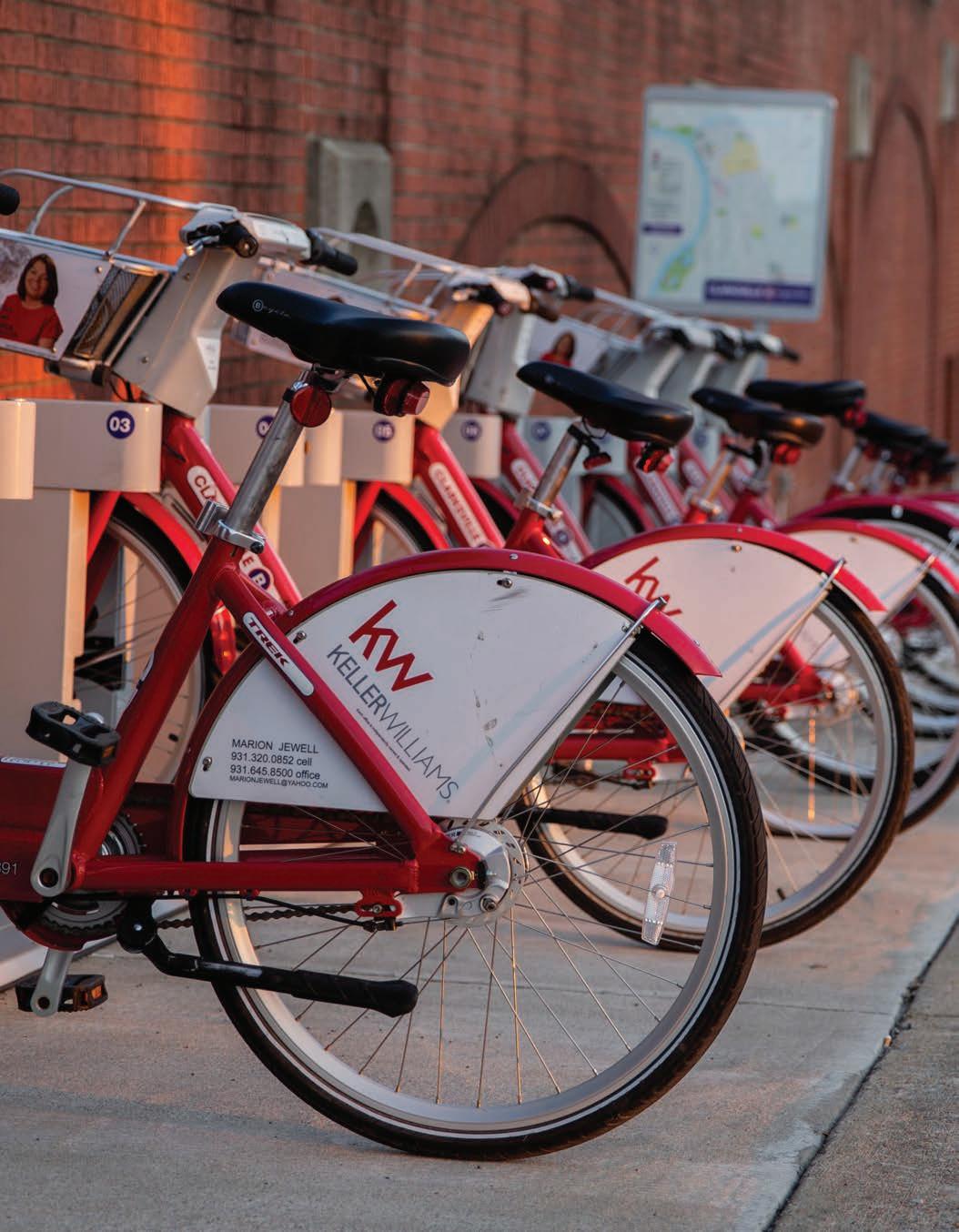
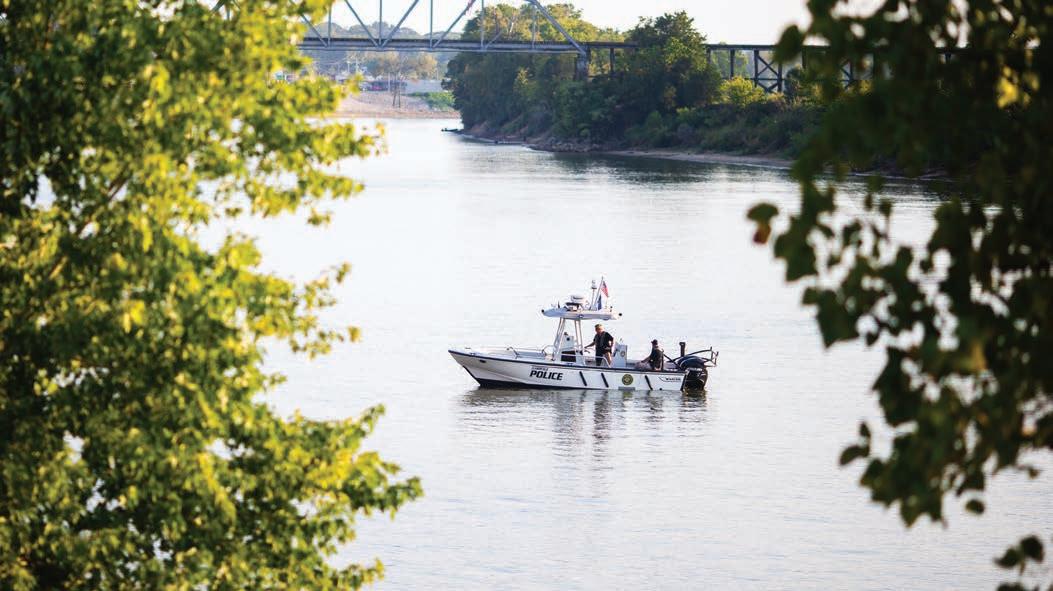
Special attention must be given to make sure public schools in every part of Clarksville have the resources they need to enable young people to succeed. This is not currently happening. As one resident told us, “If you aren’t in a high-tier school that has more programs available to you, then you’re pretty much stuck.” Access to opportunities depends “on what side of town you live on,” according to a community leader. And a resident said bluntly, “Certain schools just have more. Certain schools are not as crowded or are more upgraded.”
Clarksville-MoCo’s leaders and residents shared the belief that “under-resourced areas need greater support.” A resident explained, “There are just disparities in the education system,” and in the words of another, “As far as staffing, as far as resources.” To come together for a more equitable school system, they said, “You have to look at those disparities and figure out how your families at Northeast, your families up at West Creek, feel like their students are just as prepared for life after high school, as your family coming out of Rossview High School.” Residents cited these disparities in places “like New Providence,” saying these families “haven’t seen a whole lot of anything. They can’t even get sidewalks.” To
“When it comes to equity and inclusion—as it relates to caring—there has got to be more people being more intentional about making a difference.”
support under-resourced schools and neighborhoods, the community needs to ensure that quality educators have the incentives they need to work in certain schools. “I’m not aware of any incentives that are offered to really good quality educators, special educators, or support personnel to work in those schools that have more needs, to make things equitable,” a resident said.
Funding is where it starts. A leader explained, “The school board could write the greatest plan in the world, but if the county commissioners don’t vote to give the school board the funding, they can’t get anything done.” The creation and support of such resources also goes beyond elected officials. This must be a community effort. A resident said, “Certain sides of the town have a YMCA and other ones don’t. That’s a major thing about Clarksville.” Another said that the most active place in her neighborhood is “the common park area” where “there’s constantly kids who are there,” saying “it’d be really cool if throughout the town we could see an even greater expansion of that.”
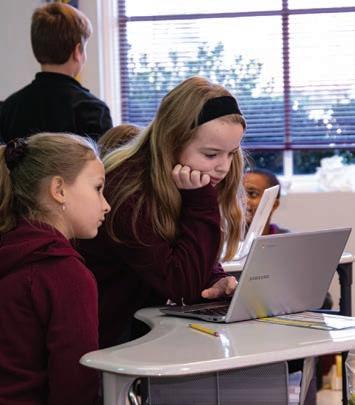
A high school student noted that “not everyone has all the advantages.” They said, “I want a community that would try to reach out to everyone. You want to make a difference for other people, since you would want somebody to do the same thing for you.” A resident spoke plainly about what it will take to make progress: “When it comes to equity and inclusion—as it relates to caring—there has got to be more people being more intentional about making a difference.” This call for action on educational equity was common across our conversations.

The Harwood Institute’s research and on-the-ground initiatives in communities across the U.S. and elsewhere suggest that for a community to work effectively it needs a web of fundamental structures, networks, and norms. “Public capital” is what we call this rich, complex system. Nine factors make up The Harwood Institute’s definition of public capital, each of which a community can actively develop.
In this section, we offer a close look at the Clarksville-MoCo community through the lens of public capital. This framework should be thought of as a touchstone— not a scorecard—for understanding the current conditions of Clarksville-MoCo and how to strengthen the community so it can tackle its challenges, especially on
education, and create a greater sense of possibility and hope.
While trying to picture how public capital works, keep in mind an ecosystem that exists right outside your door—or put more simply, how our air, water, land, and habitat interact daily. On their own, each of these factors seems quite simple and isolated at times. Indeed, each is often talked about as an independent element. What makes an ecosystem work is the robustness of each element and the healthy relationships between and among them. Public capital operates in much the same way. The nine factors are at once independent and yet highly interdependent. It is the rich, complex interaction between them that makes a community work.
An Abundance of Social Gatherings — that enable people to learn about what is happening in the community and begin to develop a sense of mutual trust.
Organized Spaces for Interaction — where people can come together to learn about, discuss, and often act on common challenges. These spaces help a community begin to identify and tap resources to address concerns.
Catalytic Organizations — that help engage people in public life spur discussion on community challenges and marshal a community’s resources to move ahead. T hese organizations help lay the foundation for community action, but do not act as t he driving force.
Safe Havens for Decision Makers — where a community’s leaders can deliberate and work through community concerns in “unofficial,” candid discussions.
Strong, Diverse Leadership — that extends to all layers of a community, understands the concerns of the community as a whole, and serves as a connector among individuals and organizations throughout the community.
Informal Networks & Links — that connect various individuals, groups, organizations, and institutions together to create the cross-fertilization effect of experiences, knowledge, and resources. People carry and spread ideas, messages, and community norms from place to place.
Conscious Community Discussion — where a community has ample opportunity to think about and sort through its public concerns before taking action. People play an active role in helping decide how the community should act.
Community Norms for Public Life — that help guide how people act individually, interact, and work together. These norms set the standards and tone for people’s engagement.
A Shared Purpose for the Community — that sends an explicit message about the community’s aspirations and helps reinforce that everyone is headed toward a common goal.
Recall that to understand the public capital of Clarksville-MoCo, The Harwood Institute conducted extensive conversations with community residents that spanned a nine-month period. We also interviewed thirty-six community leaders. What follows are the insights that emerged from these engagement efforts.
One of the most tangible dimensions of public capital is the presence of social gathering places. From youth sports to potluck dinners, these are occasions for people to learn about what is going on in the community, forge relationships, and begin to develop a sense of mutual trust. These gatherings are the seedbed for creating and maintaining public capital.
There is an abundance of social gathering places throughout the community. People get together at “water-coolers, watering holes, bars, and restaurants,” as one leader put it. High school sporting events are popular, especially among parents. A resident said, “Our community rallies around the schools. The sporting events are packed.” Neighbors also connect at the three community centers during their kids’ activities. Various events bring people together; for example, last year’s Juneteenth celebration
“brought in so many members of the community” and provided a place to “start acknowledging differences, but also acknowledging some of the [shared] issues and how to work through them.” A leader summed up ClarksvilleMoCo this way: “There are plenty of activities. It’s definitely grown in the past couple of years.”
People enjoy getting together outdoors. People frequently meet up near the Cumberland River. The Greenway is great for walking and talking, and the Riverwalk in McGregor Park is perfect for picnics and parties. Across the community, state and local parks are quite popular. A resident said the Clarksville Parks and Recreation Department “does a ton for education for kids in our community. They’re constantly doing special programs and hands-on events for them. We just built a brand-new nature center and invited all the kids in.” For some residents, golf courses are perfect locales for casual conversations over a round. One leader mentioned, “I didn’t believe it until I started playing golf and hey, you have some good conversations out there.” Amid people’s appreciation for the outdoors, some residents want to ensure outdoor gathering places remain or even grow in number. A high school student said, “I’d like to see more green areas, instead of new buildings. Clarksville is a beautiful place and it’s getting urbanized with all the new people coming in.”
The revitalization of downtown is driving gatherings and community connections. Downtown Clarksville is increasingly a place for people to get together. “People want to stay here, spend their money here, and be entertained here,” one resident said. “You’re seeing that so much more now than you were a decade ago.” People gather at the Downtown Commons lawn and pavilion for Downtown at Sundown concerts, movie and worship nights, and other events. Food trucks frequently park around the perimeter. Folks love the Commons’ ice skating rink during the winter and the farmers market on Public Square during the summer. Liberty Park’s event center and amphitheater is another popular setting for a variety of events. Austin Peay State University brings people together for its dance, theater, arts, and public speakers, as well as for “college athletics, different cultural things,” as one leader put it.

“People want to stay here, spend their money here, and be entertained here.”
Churches serve as important community hubs. Churches and religious functions provide fellowship and chances for people to gather. One leader explained, “This is the Bible Belt, so church is definitely a big thing.” Faith-based settings include many small churches and also mega-churches.
People told us that their “church family” often shares meals and meets for various programs. A leader noted, “We’re still in the south, so going to church is a very big part of what we do.” Church is an especially important hub within the Black community. According to one Black leader, “Church is still the nucleus of the Black community here in Clarksville, hands down.”


As Clarksville grows, so does the appetite for connection. Residents are increasingly seeking ways to gather with one another. New destinations are constantly being developed, such as the F&M Bank Arena being built next to the Downtown Commons. One leader noted plans for a newly renovated performing arts center at the historic Roxy Regional Theater, originally erected in 1913 a s Clarksville’s first movie theater. But people also said they are seeking more restaurants, a greater diversity of places to go, and more gathering places across the whole community. “They’re trying to squeeze as much onto Wilma Rudolph Boulevard as possible,” a resident said, “instead of trying to spread out all over the city.”
Many gathering places are inaccessible due to transportation challenges. Many find it hard to reach some of Clarksville-MoCo’s most popular gathering places because, as one leader said, “Transportation is always an issue.” Another explained, “You pretty much have to have a car to really thrive. We’re built spread out. Bus is the only option, and it doesn’t go everywhere.” Even if you do have a car, they added, “The traffic has gotten so much worse as we’ve had trouble with infrastructure keeping up with growth.” A student spoke to the need for expanded public transportation, saying, “Obviously you can’t be near everything. But it can be a little easier if you have a close bus s top to get to the grocery store or a f un hangout spot.”
These spaces provide room for people in a community to come together to learn about, discuss, and often act on common challenges. Organized spaces for interaction help a community begin to identify and tap resources to address concerns. The focus is on the opportunities that exist for people to come together—and not necessarily the existence of physical buildings.
Professionals interact in various organized spaces. Community leaders mentioned the Chamber of Commerce as a setting where they can connect to discuss shared opportunities and challenges. Aspire Foundation, the NAACP, the United Way, the Rotary and Kiwanis Clubs, and the CMC Education Foundation were also highlighted for hosting organized spaces. To increase opportunities for groups to connect—and to help reduce competition and duplication among civic groups— Leadership Clarksville recently launched a new convening for nonprofit organizations to regularly come together and increase collaboration among groups.
Churches provide some spaces for interaction. Several local churches provide spaces for their members to come together. And some of these activities include participants from the wider community who
are not part of the church congregation. One resident described a church-hosted event focused on redistricting and “how that will impact communities depending on how they draw the lines.”
Most conversations
on
civic issues “honestly happen with my neighbors or just wherever there’s a gathering.”
Residents do not identify many organized spaces. People in ClarksvilleMoCo are conscious of community challenges, and they talk about them when they meet up, but most of the residents we spoke to could not name places where people come together expressly to learn about, discuss, or act on community challenges. One leader mentioned public library meetings where “they look at trends and things happening within education,” while another leader acknowledged that most conversations on civic issues “honestly happen with my neighbors or just wherever there’s a gathering.”
Organized spaces occur in pockets for professionals. Although leaders have plenty of chances for interaction,
one said there are “so many separate pockets of meetings” that most groups don’t know what others are doing. Instead, another pointed out, people find out about different events by “word of mouth or they’ve been part of that organization.” Even when people learn about a new chance to get involved, they “generally stay in their own lanes unless they’re invited to the table,” according to a different leader. And, as noted above, the spaces that do exist tend to engage professionals more than residents. A few people mentioned school board meetings as a place where residents can get involved. But few attend those meetings, a leader told us, “unless it’s a pressing issue that everybody’s jumping on the bandwagon.” Those who do attend only receive a couple of minutes to participate.
People want more organized spaces for interaction. One leader said that Clarksville-MoCo needs more spaces for community interaction to help “see
Even when people learn about a new chance to get involved, they “generally stay in their own lanes unless they’re invited to the table.”
issues that we probably don’t know exist because everyone has a different perspective.” They continued, saying, “People have different experiences that they can bring to the table and then we can see what needs to be addressed and what’s probably repetitive.” There have been examples of such spaces in the past. A resident mentioned a project that had organized “roundtable discussions about where parents wanted to see the school system go,” but said they didn’t know of anything similar since then.

Catalytic organizations engage people and institutions in the work of public life, spur discussions on community challenges, and marshal community resources to move ahead. These organizations help lay the foundation for community action, but once an initiative is up and running, these organizations often move on to the next challenge.
Various organizations are stepping up. One leader told us, “There is an increasing number of nonprofit groups here trying to address some of the problems.” Another said that in response to the pandemic “you had a lot of nonprofit organizations that were out there feeding people. You had different community organizations really stepping up to the plate.” Big Brothers Big Sisters provides mentors to young people and works with parents and families, while Recover Our Sons teaches practical skills to youth who live in public housing. Black fraternities and sororities, such as the Clarksville Alumnae Chapter of Delta Sigma Theta Sorority, are especially active, providing tutoring and other support to young people. Various Clarksville organizations are focused on issues including bullying, suicide, substance abuse, homelessness, literacy, teacher support, and support for kids with developmental disabilities, among
other challenges. Several emerging groups are working to infuse Black culture into the community, and a leader noted increased “development of Blackfocused organizations” like Manifest Magic Black Girl Cooperative.
There is a big focus on the military. “There’s a lot of veterans groups,” in Clarksville-MoCo, one leader explained. “Veterans have a lot of families here in town.” Various organizations bring veterans together to advocate and help serve the community and each other. Women Veterans of America assists veterans with benefits and provides a support network described by one member as “a sisterhood.” They also lobbied successfully to have June 12th recognized by the state of Tennessee as “Women Veterans Day.” Blue Star Families is active in the community, and Montgomery County Veterans Coalition is a “loosely organized but vibrant entity” that meets monthly. Across local organizations, veterans often are recruited for leadership roles. One leader stated, “It is commonplace to ensure that there’s always a veteran voice, a veteran representative, on every board.”
Churches are vital anchors in Clarksville. Clarksville-MoCo’s churches are “heavily involved,” as one leader put it. “They have different outside-of-school activities for the different kids where they invite them in.” Some churches
“It is commonplace to ensure that there’s always a veteran voice, a veteran representative, on every board.”
“have tutoring set up in their facility.” One agreed to provide space for the new Boys and Girls Club of Montgomery County, while others host existing afterschool programs. And many others lead community efforts like combating hunger, homlessness, and drug addiction. A resident said, “parents and churches are getting together and taking up meals and bags of supplies to donate to schools to make sure the children are getting fed.” Churches both support the community and galvanize support from within the community.
Still, very few organizations are truly catalytic. Catalytic organizations spur on discussions about challenges and marshal community resources to move ahead. The Aspire Foundation does this, bringing together public and private resources to attract companies and developers, and helping to stimulate economic growth. The Rotary and Kiwanis Clubs work on some catalytic initiatives. A group convened by the mayor is working across sectors and communities to create a five-year plan to address homelessness, working to
get the community mobilized ahead of the challenge. But few other catalytic organizations or groups were mentioned in our discussions.
An array of organizations support classrooms and students. One of the CMC Education Foundation’s key initiatives is working to “remove the burden of teachers having to try to bring in additional resources into the classroom” such as books and supplies, according to one resident. Google has donated thousands of Chromebooks to K-12 education during Covid and hosted a local coding class for youth. Rotary Club volunteers help to increase literacy by partnering with schools through the Rotary Readers program. Many other organizations are working to support teachers and students with resources.
A focus on providing services. Organizations in Clarksville-MoCo tend to focus on providing services and activities. The United Way, for instance, partners with an array of health and

education service providers. As noted, many churches provide important services such as combating hunger, homeless, and drug addiction. In their efforts for young people and for the community at large, most local groups focus on more traditional service opportunities and not on more catalytic initiatives to foster deeper engagement or address systemic issues like educational equity or access. Deep work on education is mostly left to the school district. When asked about entities focused on larger education change efforts, one leader said, “Outside of the school system, I can’t think of any.”
Duplication of effort. One leader explained, “There are so many organizations here that are like-minded, good-hearted, but also trying to do almost the exact same thing.” Another said, “We have lots of organizations
“We have lots of organizations that are doing the same things and sometimes we don’t collaborate.”
that are doing the same things and sometimes we don’t collaborate.” Wordof-mouth and personal connections are how people get involved, but word doesn’t always get around, so people don’t always know what efforts exist.
One resident said, “People branch off and try to start their own nonprofit to do X, Y, Z. Then it’s like, this person and this person already do X, Y, Z.” That resident wondered aloud, “Why don’t you all work together?”
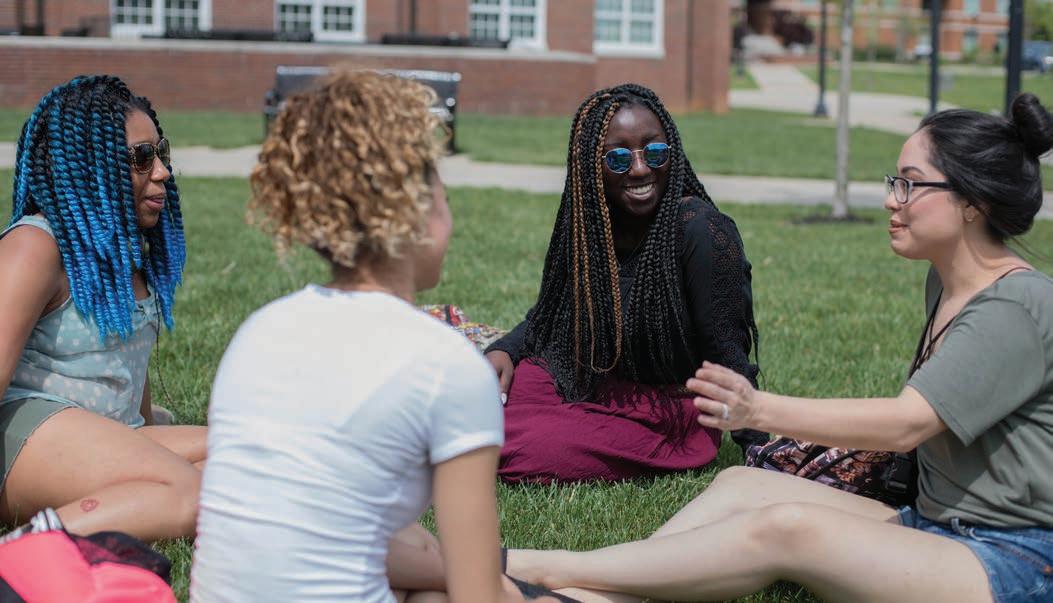
Safe havens are places where community leaders can come together to talk and work through community concerns in “unofficial” candid conversations.
Some leaders get together in safe spaces to discuss community concerns. One local leader described a close-knit group of around ten people that have been meeting informally, every Sunday, for nearly six years. “Our conversations go all over the place,” they said. “They are intense and deep, and they go to any need. But it is definitely about the growth
of Clarksville.” At the same time, they added that most informal conversations tackling community challenges are happening “in someone’s house or backyard around a fire.” Another leader agreed that leaders typically connect one-on-one “off the clock and discuss things,” saying, “We may even just brainstorm together. … We might be in an event together where we’re sitting around talking and saying, ‘Hey, that’s a really good idea. We should do that.’” Overall, leaders in these conversations did not describe many actual spaces that could be considered safe havens for leadership discussion; the opportunities that do exist rely primarily on individual personal relationships.
Leadership programs provide safe havens for new leaders. Many leaders named Leadership Clarksville as an initiation into community leadership— and as a resource for local knowledge, connection, and candid peer discussion. One alum said Leadership Clarksville “brings people together, gives people outlets and opportunities so individuals interested in making a difference have a great outlet for connecting with other people like themselves.” In addition to Leadership Clarksville, Leadership CMCSS through the CMC Education Foundation takes “thirty people across the spectrum to give them a pretty big understanding of every aspect of the school system.” These leadership programs are sowing seeds of trust among emerging leaders and creating chances for new safe havens to form.
Clarksville runs on relationships. Many Clarksville-MoCo leaders interact, bond, and brainstorm with each other through social gatherings and professional networks. These existing spaces foster trust and knowledge-sharing among leaders, and they provide opportunities to create strong and robust relationships. However, not everyone has access to these social gatherings and networks. Also, these existing spaces may not foster broader conversations about the larger community, as distinct from individuals building relationships or exchanging information.
Leaders want more spaces for candid conversation. One leader told us they seek “an opportunity for us to more formally get together and connect on a regular basis and attack problems and opportunities more purposefully together.” Another leader said, “There seems to be a lot of silos. The Clarksville I would love to see is one where we collaborate.” Clarksville-MoCo leaders are seeking more safe spaces where they can talk openly about the community, its challenges, and its opportunities.
Strong, diverse leadership must extend to all layers of a community. Leaders must understand the concerns and aspirations of the community as a whole; they must serve as connectors among individuals and organizations throughout the community.
Clarksville leaders identify many fellow leaders. Leaders throughout our conversations named a host of leaders in groups from the NAACP to United Way, from church pastors to Austin Peay. Both Dr. Angela Huff, the interim Director of Schools, and Anthony Johnson, the school system’s Communications Director, were lauded as strong leaders of the school district. One organizational director said leaders in Clarksville “have a heart for change” and are “willing
to work.” When describing leadership in Clarksville-MoCo, one education leader said, “I see leadership as high up as our mayors, in the small business communities downtown on Main Street, in the classrooms where the teachers literally take care of our kids as if our kids are their own. I see leadership infused and touching every single part of our community.”
Clarksville residents trust informal leaders closest to them. People talk about leaders who are on the ground, doing work that often goes unrecognized. One resident said “some of the most effective leaders for non-formal initiatives in our community are not necessarily someone who has ever been elected to public office, who has headed a corporation, or who has an advanced educational degree. Some of the most effective leaders are people who saw a need, felt compelled to make a change, and were able to articulate that need in a way that other people wanted to be a part of making that change.” An elected leader observed that grassroots movements are “growing in very diverse and small circles that are really connected” with leaders who are “really trying to push from the lower levels up.”
Many people say official leaders are working better together. Both Montgomery County Mayor Jim Durrett and Clarksville Mayor Joe Pitts were singled out for their willingness to
work together despite their opposing political parties. One resident said, “This is the first time, since I’ve been here, that we’ve had two leaders that were on the same page.” This bipartisan, cooperative dynamic is noteworthy because in “previous years and decades, there was always a tug of war between the city and the county,” according to a leader. Connections between different local leaders are seemingly strong and productive. As one leader said, “On the state level, our legislative delegation has a very, very good working relationship with the city council, city mayor, county commission, and county mayor.” Some people expressed confidence in city council members as advocates “that listen and really want to make a change based on the concerns of the people around them.”
Residents want more leaders deeply connected with the community. Residents, in particular, said they want leaders who “really understand what’s going on” in the community and in
“This
is the first time, since I’ve been here, that we’ve had two leaders that were on the same page.”
People want more connected, trusted leaders “who can rally people and create a meaningful opportunity to engage.”
people’s lives. One resident told us they do not feel that enough leaders have “been invested within the parts of the community they serve.” This seems to be partly a function of how leadership has long operated in Clarksville-MoCo, and partly due to the area’s rapid growth. Another resident added, “A lot of people don’t even know what to expect from our leadership because none of the leadership has been invested really within the community.” One resident said people want more connected, trusted leaders “who can rally people and create a meaningful opportunity to engage.”
Another said, “We lack community leadership in guiding and teaching and mentoring toward a larger end.” Lastly, a resident summed up several people’s views by saying that too many leaders are simply “detached” from the community.
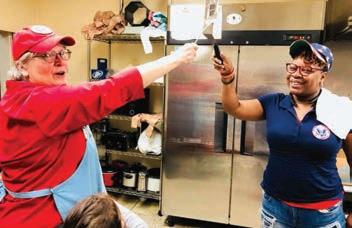
More leaders are needed to keep pace with rapid growth. A former councilperson said, “There’s always trouble trying to find enough leaders.” Many current leaders say they are expected to pass the torch, but often don’t have someone they can pass it to. Another leader said, “When you experience the growth that we have over the last several years, it’s hard to keep up.” Indeed, as Clarksville-MoCo grows, there is a need for more leaders at every level of the community—this came up repeatedly in our conversations. A resident said about local leaders, “Some of them are tired and don’t know how to say their time is up,” and “the good ones don’t have anybody to pass it on to.”
More diversity of leadership is essential.
Many people told us that the hiring of a Black Director of Schools, Millard House, was an important step toward greater diversity among community leadership. The city council has become more diverse recently, too. One resident said, “This is the first time we’ve had so much diversity in our local government.” However, for every person who highlighted progress,
there were many more who called for improvement and acceleration in the diversity of community leadership. “The city government and the county government both are predominantly White-male,” said one leader, adding that only two of the ten White local judges are women, “so there’s still no diversity in terms of race and ethnicity, but at least we finally have two women on the bench.” Indeed, as Clarksville-MoCo grows and changes, people are looking for more “leaders that look like you,” as one resident said.
The treatment of the former Director of Schools, Millard House, left feelings of mistrust. Some community members were left questioning if non-White leaders are really wanted and respected. A resident said, “Based on what I observed, [House] was criticized because of his race. We have a lot of that here. It creeps out at certain times. I wish that wasn’t the case, but it’s sadly true.” Another explained, “He got things done. He made things happen. The district won awards and everything else, but that wasn’t enough. The whole thing was a Black and White issue.” And in terms of his salary raise, “There was never really any middle ground on that,” one leader explained. “If I were a candidate for a job like that, it would potentially give me pause. ‘Hey, is the same thing going to happen to me?’” Many in these conversations said people’s confidence in the school system took a hit, with one leader saying, “Up until the superintendent left, I was very confident in the way it was going.”
A small group of leaders holds most of the power. In Clarksville-MoCo, decision-making often comes down to a small group of individuals. These leaders tend to be connected and well-networked but often seen as “not accessible” as one organizational leader put it, in an “ivory tower,” or as not having “boots on the ground in the community.” Most of the leaders with power are “people that had money, got money, and are still with money and are still powerful in Clarksville—very powerful,” a resident said. Another said that many in the community are “fed up—the leadership is stagnated.” Though frustration abounds, there is some optimism about emerging leaders who are more diverse and more rooted in local communities. “We’re seeing people I know, or people that I went to school with,” one person observed. “It’s just not one type of group that leads this whole community. We’re having our voices heard too.”
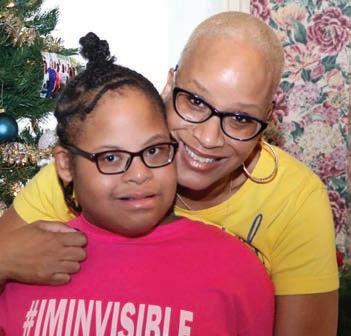
Informal networks and links work to connect various individuals, groups, organizations, and institutions together to cross-fertilize experiences, knowledge, and resources. Through these networks and links, people carry and spread ideas, messages, and community norms from place to place.
Networks exist throughout Cl arksville-MoCo. Some of the community’s strongest networks exist among those with military affiliations, frequently within veterans groups, a s well as within business groups. People often mentioned the Chamber of Commerce. One leader explained, “ We have Business After Hours for business members, professional p eople. It’s very informal, but it’s a great place to get things done.” Other strong networks are church-based or organization-based networks like sororities and fraternities. Civic clubs like the Rotary and Kiwanis clubs provide a place for folks to connect, form bonds, and design and implement initiatives together. Clarksville’s networks were described by one leader as “different intersectional groups working together to bring about change in a positive w ay for our city.”
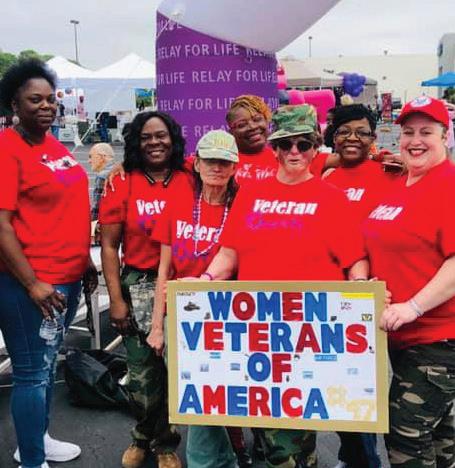
Some links between networks exist but need to be strengthened. When talking about interacting across networks, some residents mentioned meeting and connecting with other parents at youth sporting events. Military-related events also help weave networks together. One leader said networks “intersect as it pertains to the military because it’s just a melting pot.” But leaders and residents alike expressed an aspiration for more links between different networks to share information, unlock the community’s resources, and take on common challenges. Some leaders observed that there is more “cross-fertilization” between networks when groups plan events together. Several others said that efforts to link up different groups have gained momentum recently. One leader said, “I get calls from others saying w hat they can do, how we can partner. I d efinitely think there is growth in that.”
“There’s a lot of siloed communities here in Clarksville. If you happen to connect with the right one, you can feel comfortable and grow.”
Networks can be siloed and based on people remaining comfortable. Though strong local networks exist, “communities don’t always overlap and they don’t always connect,” as one resident put it, “and I think that is hurting us.” Another said, “There’s a lot of siloed communities here in Clarksville. If you happen to connect with the right one, you can feel comfortable and grow.” Differences of focus and background can prevent groups from linking up. One leader said, “We’ve now closed our circles to only include those who we are comfortable enough with, and sometimes that’s just the same race, same sex, same belief, period.” Another leader called for “more partnerships and communication between business and educators” specifically, and more time spent “seeking what other organizations are doing to collaborate.” The leader said it is especially important right now because people are “working in isolation. They’re focused on what their organization is doing.”
Parts of the community are not plugged in. People who are well-networked have an advantage in Clarksville-MoCo. “If you’re new to the community, it may be hard to learn or get access to different things,” a resident said. For example, a community member described a conversation with a business owner who said that “none of the Spanish-speaking community heard about the funding available through the federal government for businesses affected by Covid.” This gap in information or access to networks keeps parts of the community often working in their own orbits. A resident echoed what we heard often, that in the community, “the haves and have-nots do not usually intersect.”

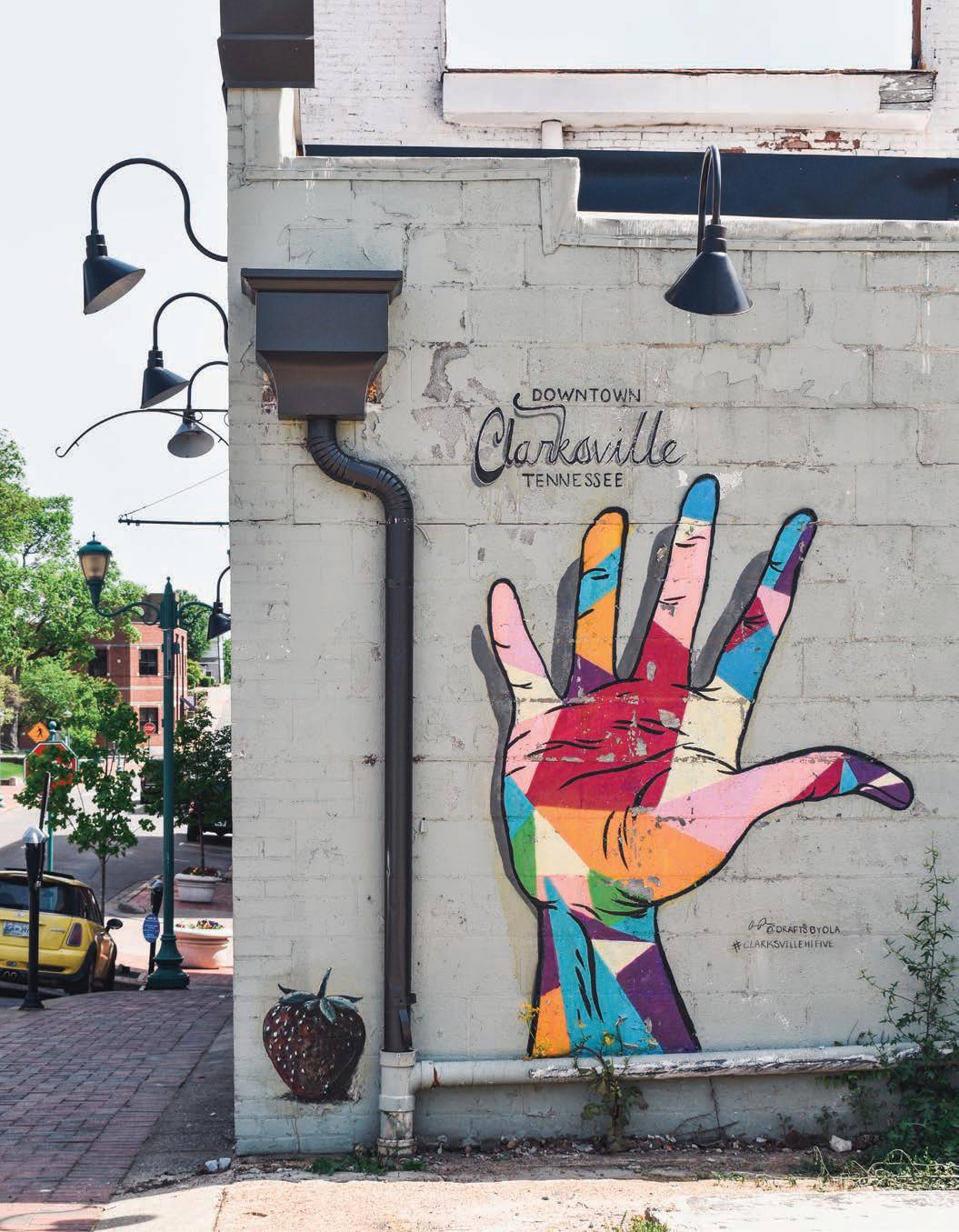
It is through conscious community discussion that a community creates opportunities to think about and sort out its public concerns before taking action. Communities that work together make a conscious point to constantly engage each other—citizens, institutions, leaders, and others. This is a key part of creating a shared sense of purpose and direction within the community.
People don’t see many opportunities to engage. When asked, those in our conversations could not name many, if any, opportunities for residents to come together to discuss and sort out shared concerns. One education leader noted that in the past, the school board developed its policy framework in close consultation with the entire community.
“For a whole year,” the leader explained, “the school board sat in sessions once a month and listened to the religious community, the business community, students, fraternities, teachers, staff, different organizations, … and we built our board policy on that back about fifteen years ago.” They said this discussion was one key reason for CMCSS’s near-perfect graduation rate in the years since. More recently, however, a resident explained, “Really the only venue for the common person is to go
to a school board meeting during open comment where you basically complain. That’s not where you go and throw out ideas and come up with resolutions as a community member.” In both interviews with leaders and resident conversations, people could not identify times when different community members have come together to discuss broader i ssues of concern.
Clarksville talks informally. There are plenty of discussions in ClarksvilleMoCo about public concerns and shared community challenges, but most such discussions are not public or organized. Instead, people told us that the most thoughtful conversations about their community happen in places like “the church, barbershop, hairdresser.”
People do engage with each other, one resident told us, “but they’re very insular conversations.” You may see an informal discussion about education among parents, but it “only really comes up when you’re in a group of parents who are having an issue with the school system.” As noted in our findings about social gatherings and informal networks, these more informal conversations are common, and valued, but they happen in “different silos,” another resident said, “not all of us coming together at one time.” Overall, leaders and local residents offered hardly any examples of community members gathering together to discuss broader issues of concern.
Existing discussion often devolves into unproductive debates. While school board meetings and similar settings could be a venue for community engagement, people told us that such spaces tend to be hotbeds of contention, devolving into gripe sessions or fights over issues including mask mandates and vaccine requirements. Explaining their frustration over a recent school board meeting, one resident said, “The last school board meeting that I witnessed was when a lot of parents were complaining about wearing a mask. Why I was frustrated is that we want to come together, but we’re not talking about how to support the teachers or what can be done in order to make the children and the teacher successful.” And though several people mentioned Facebook as a resource for community updates or news from school groups, we also heard that discussion taking place on social media is “uncivilized,” a “cesspool,” a “wasteland, and not the place for serious dialogue.”
People want more opportunities to engage as a community. One resident echoed the aspirations of many conversation participants when they said, “We need to spend more time having conversations about the vision and mission” of the community when it comes to education. They added that this requires speaking not only with educators, “but also with people in the military, and
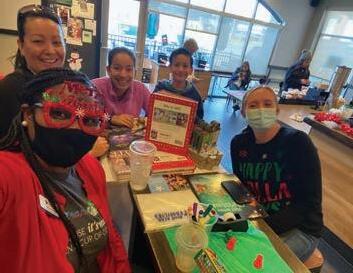
from different parts of our community”—in short everyone who “directly or indirectly” influences education outcomes. A leader said, “People should be able to share ideas, express concerns, and have outlets to work together to create solutions.” Another resident called for “getting back to healthy exchanges,” while another called for a “reset” in community discussions. “We have to re-engage,” they said. “This sort of dialogue needs to happen more often. We can start that way and that will go a long way.” Reflecting on the conversation they participated in for this study, one resident found value in “just having this open dialogue like we did tonight.”
“People should be able to share ideas, express concerns, and have outlets to work together to create solutions.”
Common community norms for public life help to guide how people act individually, interact, and work together. These norms set the standards and tone for public life and engagement.
Clarksville-MoCo has a cando attitude. One leader said the community is “not afraid to try new things” and come up with “creative solutions.” Another noted when people see a challenge, there is a “let me fix that” approach. One can see this can-do attitude with everything from downtown development, to the public schools, and to ensuring basic support services are provided for people. A leader described the community, including the schools, as always seizing new opportunities, embracing an attitude of, “Oh, I want to do this new thing!” saying it’s “cool” that so many people take this approach. Despite this report noting how often
groups work in silos, a leader said that people generally are not “territorial” and “protective” of their turf. Indeed, Clarksville is a place where people seek to work together and get things done.
The focus often is on informal gatherings and relationship building.
In Clarksville-MoCo, the community norm is getting together for informal meetings and conversations. Gatherings often center on celebrations, sporting events, or recreation. When discussing settings where community members come together, a leader told us, “Most people that attend those places are really looking to build relationships in a way to be part of their community.” Another said, “People aren’t going to come to meetings;” instead an event “is better, really works, where a town hall or meetings do not.” Indeed, in this community, “you have to rely on the grapevine,“ one person said. A youth mentor said that to make a difference, “You just have to get out and talk to people. That’s the only way because we are a word-of-mouth-based community.”

“The people with the resources and the money tend to be the ones who have more of a say in what happens and what changes take place.”
Decisions are driven by a small group of people. A theme noted throughout this report is that a relatively small number of people seem to make the major decisions in Clarksville-MoCo.
“The people with the resources and the money tend to be the ones who have more of a say in what happens and what changes take place,” one leader said. Many people believe that leadership needs to evolve in order to keep pace with Clarksville-MoCo’s growth.
Many people don’t feel their voice matters. There is a prevailing sense throughout Clarksville-MoCo that many people don’t engage in civic conversations because, in one leader’s words, you need to be “more affluent in the eyes of others,” to be heard. The status quo does not reflect the aspirations of community members. One high school student wants “a community that would try to reach out to everyone since not everyone has all the advantages.” Another resident said that new community conversations are needed “so that it’s inclusive, it’s equal— equal schooling, equal food access, equal opportunities for everybody within the city,” regardless of how fast Clarksville-MoCo is
growing. Right now, too many people feel like, “It doesn’t matter what I say, it’s not going to make a difference,” a leader told us. Engaging more people in conversations about the future of the community will require actively demonstrating to people that their voice matters.
Leadership gaps exist. As the community grows, the need to develop more leaders—with more diverse backgrounds, at more levels of the community—grows more urgent. This will require embracing new norms of not only making room at the table for new leaders but also inviting and welcoming emerging leaders to the table. In addition, all Clarksville-MoCo’s leaders—new and established, official and informal—need to connect more deeply with the community: to know what matters to different parts of the community and to find ways to knit together these different views. As a resident said, “We need to have more opportunities where people can get their points of view to the people that can make the difference.”
Clarksville feels like a collection of separate parts. The community has strong neighborhoods, and strong networks and programs, among a variety of assets, but many tend to operate separately. There can be a disconnect between and among the different geographies, people, and groups. Too many organizations work in silos and “don’t cross communicate like they should,” a community leader said. “We have to find a way to bridge those gaps.” One leader said that “Clarksville is very much like different cities” which operate in their own orbits.
Clarksville has a stretched civic fabric. A local leader asked, in a “growing, changing city, how do we bring together all these talents and energies and cultures and personalities and diversity? How do we aim that energy and make it work?” Currently, Clarksville-MoCo’s norms—the ways in which people come together, interact, and create solutions— are not keeping up with growth. This will require evolving the community’s norms to catch up with the community’s growth. One resident said, “What would happen if we began to collaborate to combine efforts to share resources and extend resources, one to another? It’s not a competition. We’re all one Clarksville.” A major theme of this report is that “Clarksville’s outgrowing itself. I just feel that trickles into just every little thing we’ve talked about,” as a resident said in one of our conversations.
When communities have a shared sense of purpose, explicit messages exist about the community’s aspirations and about everyone heading towards a common goal—or at least trying to work at common goals.
A shared sense of local pride. Clarksville-MoCo’s foundation is strong. People throughout the community share a sense of pride in the community—a real asset not to be taken for granted.
Recall the resident who said, “Clarksville has been one of the best experiences of my life. I’m ingrained in the community. I feel loved in the community. I love others in the community. ” Or there are the individuals who told us people “have each other’s back” and “Clarksville is a
“What would happen if we began to collaborate to combine efforts to share resources and extend resources, one to another? It’s not a competition. We’re all one Clarksville.”

great place to raise a family and have your children grow,” and those who celebrated the natural beauty of the area. In Clarksville, civic pride is strongly tied to this basic sense of affection.
Such comments were widely heard throughout our conversations with residents and leaders.
Support for the military and service members brings Clarksville together. As noted throughout this report, Clarksville rallies around Fort Campbell and veterans, and people within the community maintain a deep sense of patriotism. This longstanding tradition is rooted in Clarksville; it is a central part of the community’s identity and sense of purpose.
The community shares aspirations for its young people. People in Clarksville-MoCo want their younger generation to have opportunities to grow and succeed—no matter their background, resources or challenges. A s a resident said, one “common goal is for all children to be able to go to a school, live in a safe environment, and be treated fairly,” and for them to “have the same opportunities as everyone else, rather than one side of the town versus the other side of the town.” And a teacher told us, “That’s why I do what I d o: so that every child I come in contact with knows that there is better, and that they can do better, no matter who they are, where they come from.”
“Clarksville is a small, big-town that is growing very rapidly. If we put our minds and hearts together, we’ll be able to do a whole lot more.”
Actions don’t yet match shared aspirations. There is significant work taking place in the community on education, in the business sector, among nonprofits, and in other arenas. Yet much of these efforts take place in silos and much remains to be done. While many people recognize significant educational divides “between the haves and the have-nots,” comments on these disparities came side-by-side with affirmations of local and civic pride. One resident said, “Clarksville is a small, bigtown that is growing very rapidly. If we put our minds and hearts together, we’ll be able to do a whole lot more.” For this hope to become a reality, gaps that exist between the community’s aspirations and actions must be closed.
Struggling with growth. ClarksvilleMoCo is racing to keep pace with its growth. As one resident said, “A lot of times, the leaders are so overwhelmed addressing the severe problems” that they are “not looking for ways to enhance the community. … They’re
so busy putting out fires.” Leaders are seeking better ways to move forward during growth, by proactively shaping the future, rather than reacting to it.
Not all on the same page. As Clarksville-MoCo grows, many efforts remain fragmented, operating in silos.
As a leader explained, “You get a sense that we’re all in the same book, but we may be in different chapters of the book.” The result of the silos can be “more duplication of services than collaboration.” This fragmentation prevents a broader and deeper sense of shared purpose from emerging and taking hold.
Lack of open, inclusive conversations exists. Residents and leaders alike expressed a hope for more open and inclusive conversations focused on Clarksville-MoCo’s future and dealing with its growth. “When people can sit down rationally and list these things out, then you can develop that outline that you can take to that school board member or whomever, and say, ‘Hey, we’re all thinking alike here. We just need
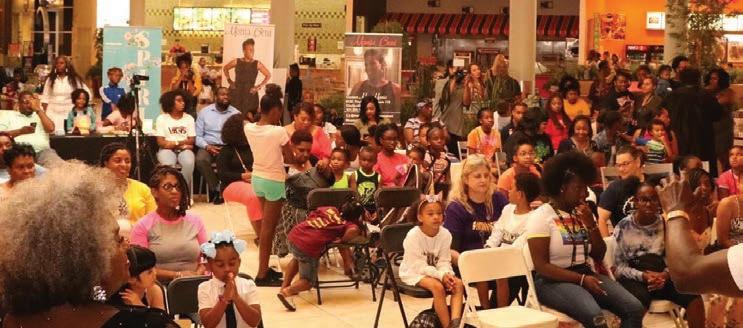
to work on the approach.’” As a leader told us in one of our in-depth interviews, “Conversations happen in silos. It is great that we’re having this conversation, but I don’t think that these conversations are happening frequently. And I don’t think people are being honest.” One resident was refreshed by the group discussion they joined, saying, “It’s interesting that you have a cross-section of people here and there are common issues and solutions that we’re all looking at.”
Reluctance to embrace the future.
There is an undercurrent of resistance, or reluctance, in Clarksville when it comes to embracing the future and finding shared purpose to move ahead. A community leader told us, “Everybody wants to see—or at least gives lip service to—improving education for all children. But when you get down to truly understanding what some children go through,” people show a lack of willingness to really engage, they said.
“Everybody needs to look in the mirror and say, ‘It’s our time; we’re going to do something different.’”
A resident said despite any expressed desire for the community to move forward, “I really don’t feel that there are common goals. Everyone has their own goal. It’s rare that you find parents, and leaders even, that are on the same page. It’s a lot of opposition.” Finally, another resident summed up what some people felt people must do to successfully address its growing pains and provide all young people—indeed all people in the community —opportunities for the future: “Everybody needs to look in the mirror and say, ‘It’s our time; we’re going to do something different.’”
This report is about how the people of Clarksville-MoCo can come together to ensure that all young people and families can succeed and the community can thrive. It is about how the ClarksvilleMoCo community can step into its future, together.
There is no single program, no individual leader, and no one organization that can do the work necessary for ClarksvilleMoCo to move forward effectively.
The task ahead is discovering how to marshal the community’s collective spirit and resources for the greater good. It is about making community a shared responsibility—a common enterprise— where different people and groups step forward and pull in a common direction.
Clarksville-MoCo is enjoying rapid growth, and to keep pace with that growth the community must grow
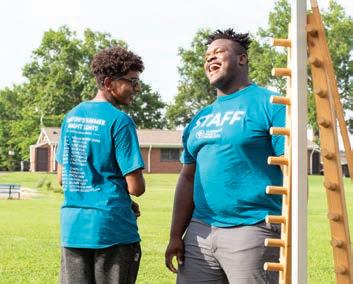
its civic capacities. These capacities must be put to work to ensure that the community hears all people’s voices; bridges current silos; creates the spaces people need to tackle their shared concerns; and develops leaders who are deeply connected to the community, among other goals. These capacities will enable the community to proactively shape its own future. They are essential to making sure no one gets left behind and left out.
The community must broaden and deepen its leadership. Leaders must find more ways to work together and share power.
Here is a series of steps that can guide the community in moving forward— steps rooted in shared responsibility and common action.
Develop more leaders.
T hroughout our conversations, people told us that Clarksville-MoCo will need more and newer leaders to keep pace with the community’s growing needs. Today, a small number of leaders hold too much power, and too many leaders are viewed as lacking in a deep understanding of the community. Moving forward, the community must broaden and deepen its leadership. Leaders must find more ways to work together and share power. They must also be deeply connected to the community and reflect the community’s diversity. For Clarksville to thrive as it grows, it is paramount that such leaders are developed.
Build catalytic, boundarys panning entities.
Clarksville-MoCo has an array of organizations and groups that provide programs and services—an asset to be celebrated. But the community lacks a large enough collection of organizations or groups that are catalytic and span boundaries. The community must work to build entities that bring people and institutions together in order to spur public discussion, spark action, and marshal
community resources. And because so many efforts throughout ClarksvilleMoCo take place in silos, and so many people do not feel a part of existing efforts, these new catalysts must courageously span boundaries— reaching across different segments of the community, its neighborhoods, programs, and networks. These catalytic boundary-spanners are essential to making building a stronger community a common enterprise.
E ngage the community on s hared aspirations.
In Clarksville-MoCo, too many people feel unseen and unheard on vital community issues, and there are far too few opportunities for people to come together and collectively discuss such issues. The status quo needs to change if the community is to step into its future. Moving forward, various groups and organizations must be much more intentional and authentic in how they engage people in community discussions about common issues. Such discussions should start with people’s shared aspirations—what they are for—rather than getting stuck in discussions about problems and complaints, which only stall progress and stir frustration and cause cynicism. Engaging people in these discussions is the very basis for creating the community’s sense of shared purpose.

Get people building together.
T he greatest of Clarksville-MoCo’s untapped assets is its people. Whether it is parents who take a more active role in their children’s education, mentors who show up for young people, groups ensuring there are more after-school activities, or residents connecting to meet some other challenge, ClarksvilleMoCo needs to bring more people together to build a shared future.
When people build together, they bridge divides and differences, see each other’s innate capabilities, and become part of something larger than themselves—all essential threads for weaving a stronger civic fabric. When people build together, they grow as individuals and as members of the community; this is how people gain a v ital sense of agency and the faith that they can help the community s tep into its future.
Moving forward, various groups and organizations must be much more intentional and authentic in how they engage people in community discussions about common issues.
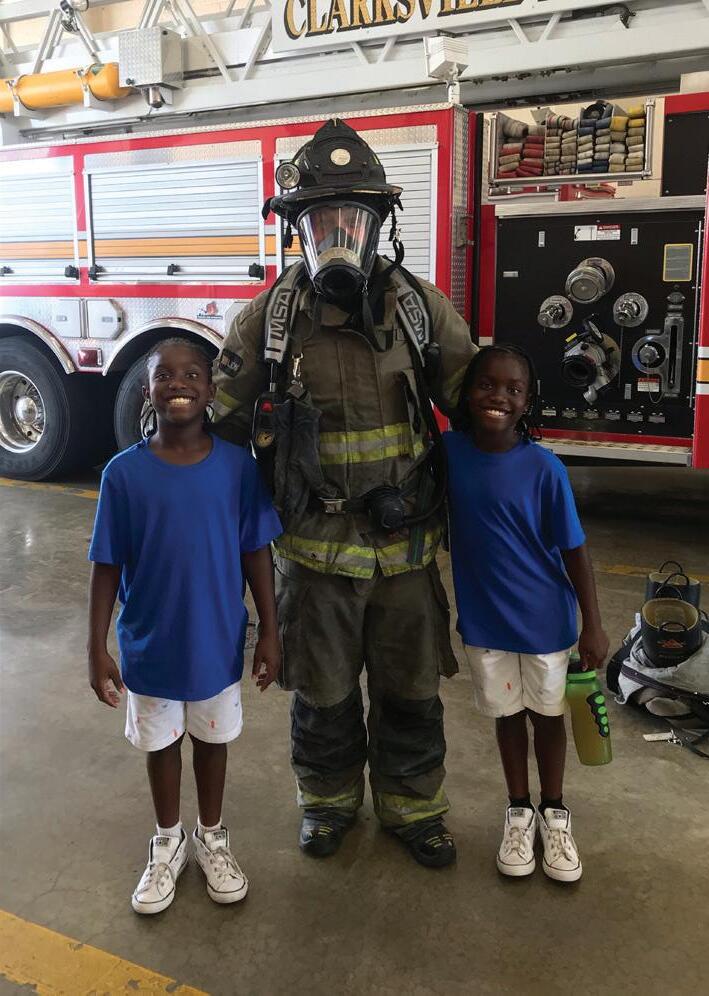
Tap into the community’s pride a nd patriotism.
Clarksville-MoCo needs to take action to support young people and move the community forward. But how can it rally people around this shared purpose? They can do so by tapping into people’s enormous sense of pride in Clarksville and their enduring patriotism. These invaluable ingredients can be the foundation for open and honest—even difficult— community conversations and for the actions that follow. The community’s shared pride and patriotism is the starting point for calling people to step forward, turn outward toward one another, and create positive action for the future.
Recognize progress and celebrate wins.
In recent years, the Clarksville-MoCo community has made significant strides in a whole host of arenas— city and county coordination and cooperation, downtown development, increasing diversity of leadership, creating innovative academies for young people, maintaining very high graduation rates, and more. Such progress should be publicly recognized and built upon as the basis for moving forward. As new progress is made, the community should lift up and celebrate new wins. Over time, powerful, positive narratives of change will grow, and civic confidence and engagement will expand, with increasing momentum.
Clarksville-MoCo Stepping Into the Future illuminates a hope-filled pathway for building a community where all young people and families can reach their full potential. The report demonstrates how the community can build its civic capacities so that all people can take part in shaping their shared future.
